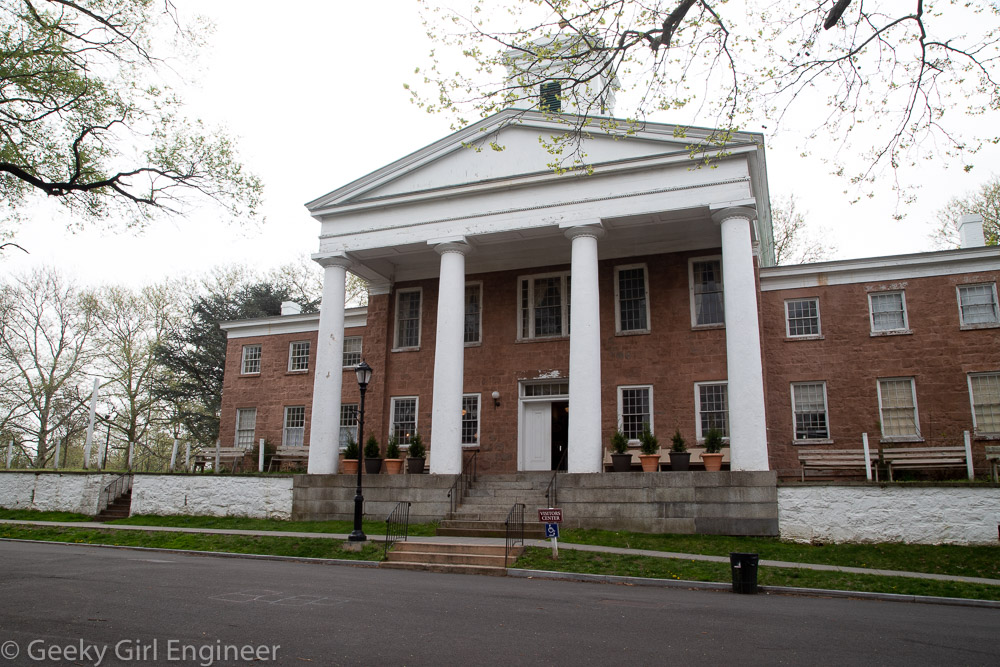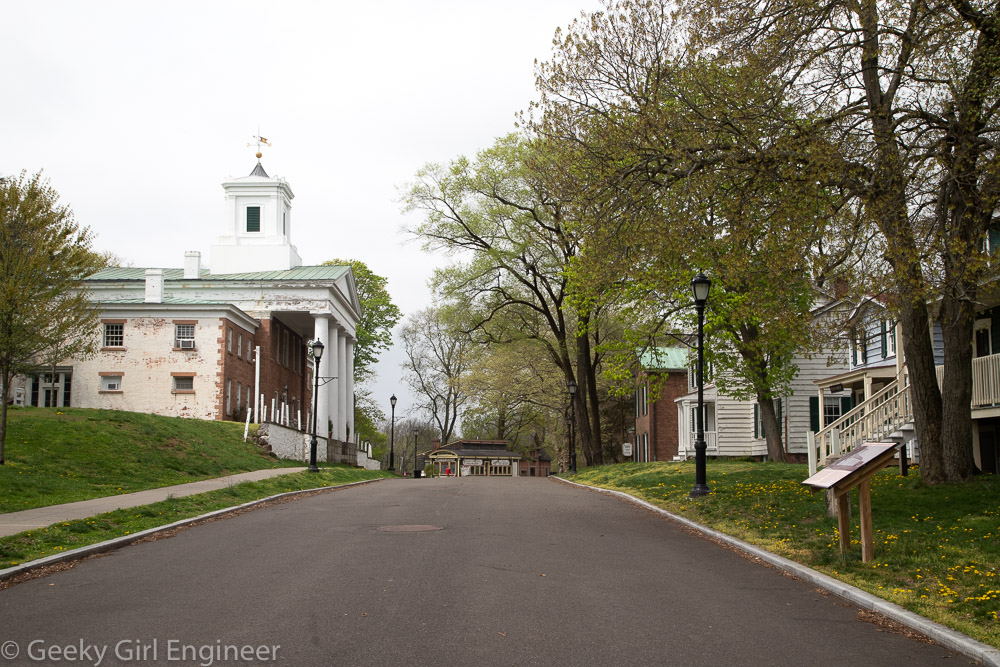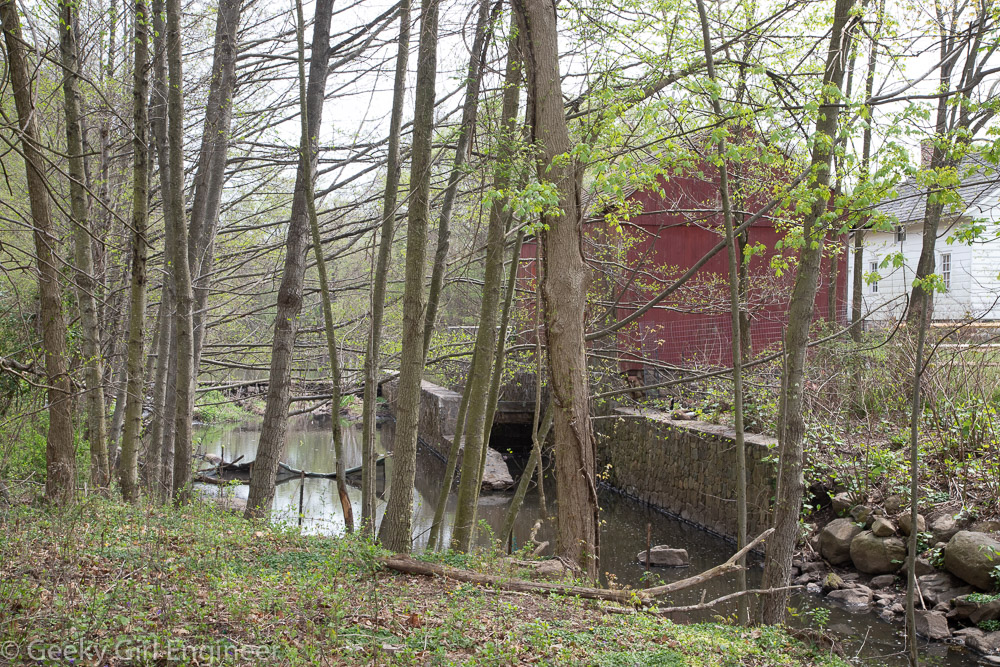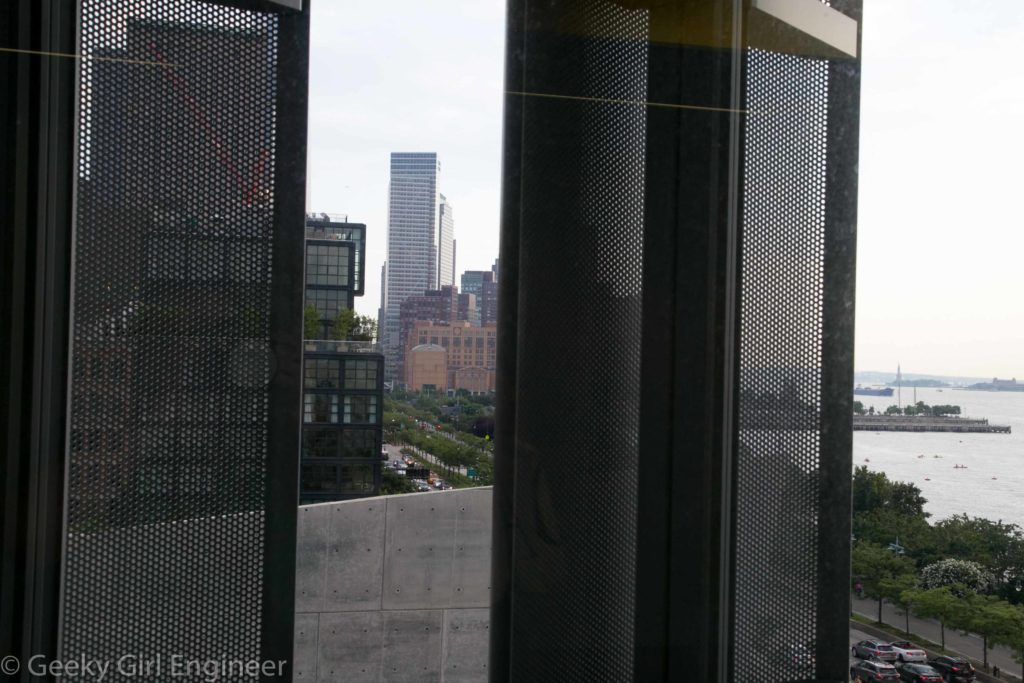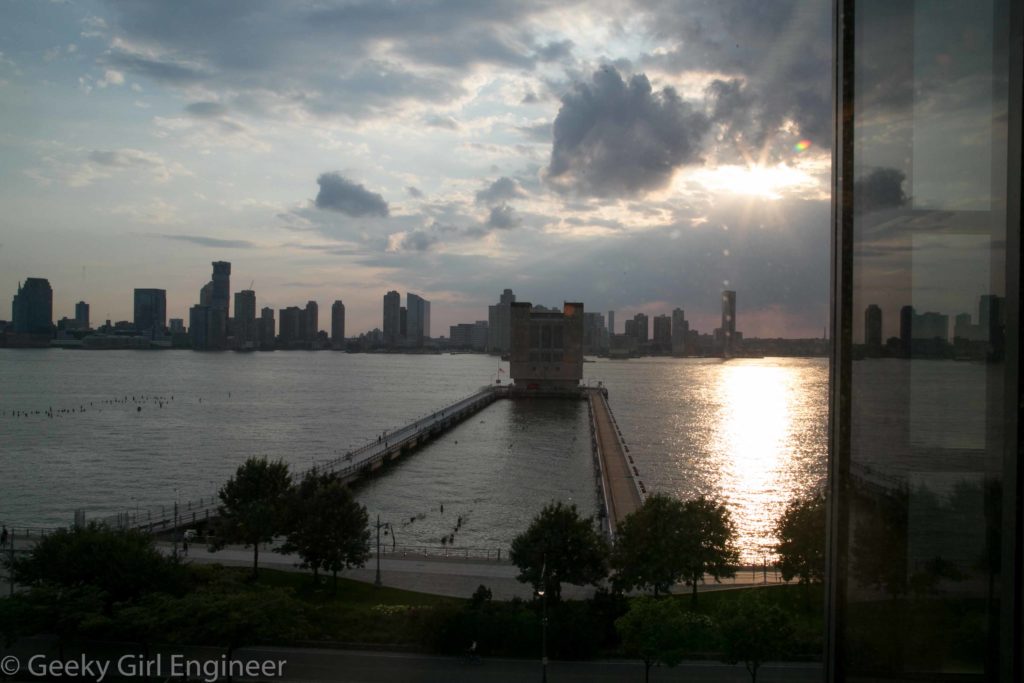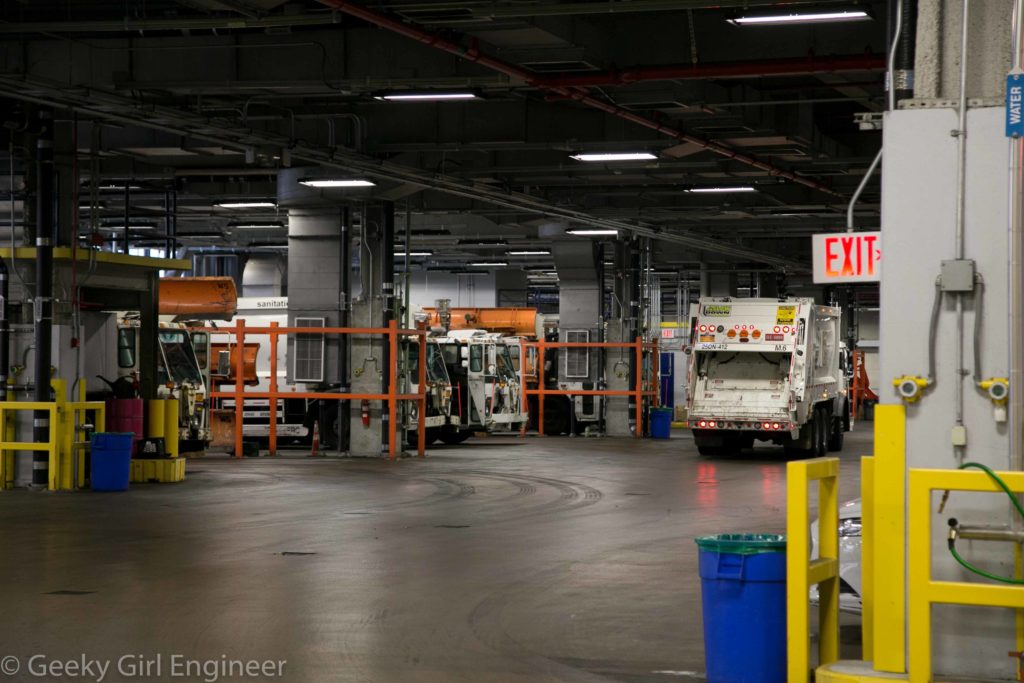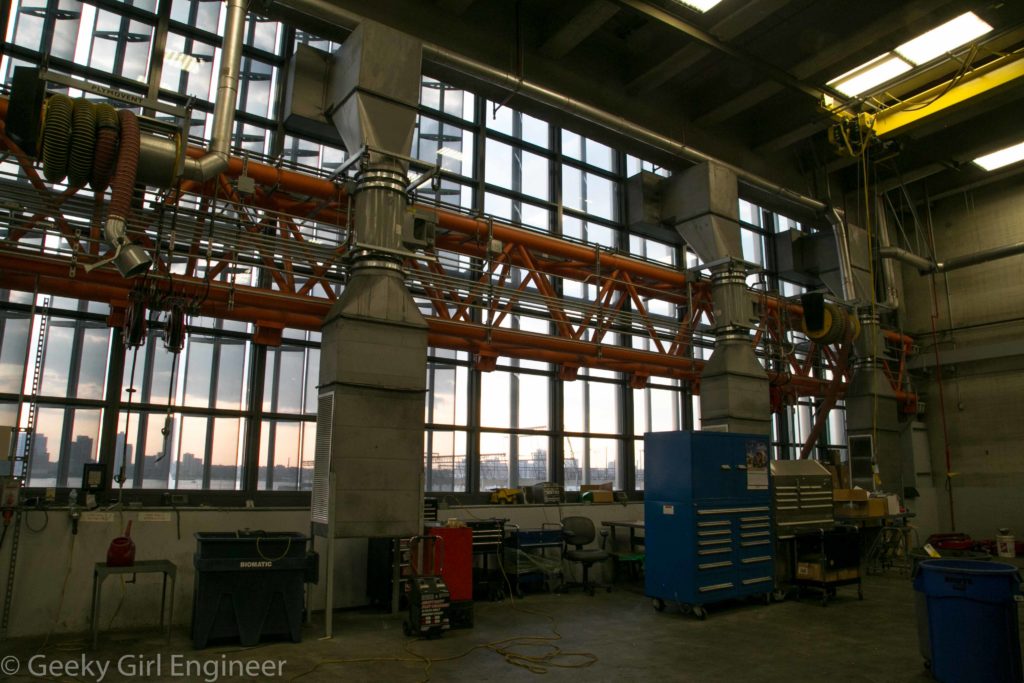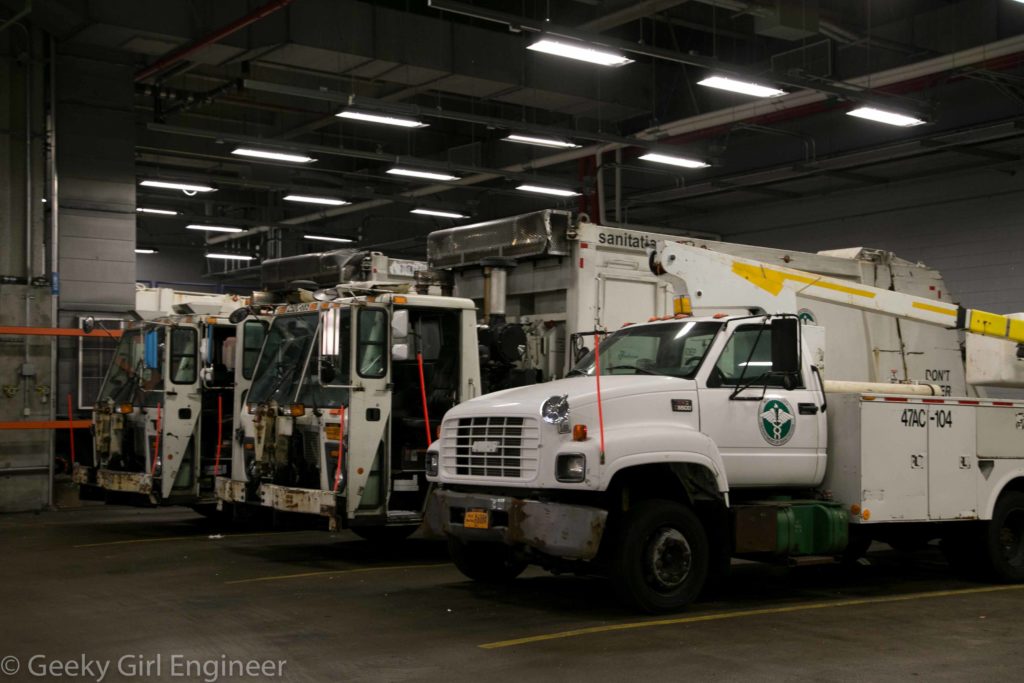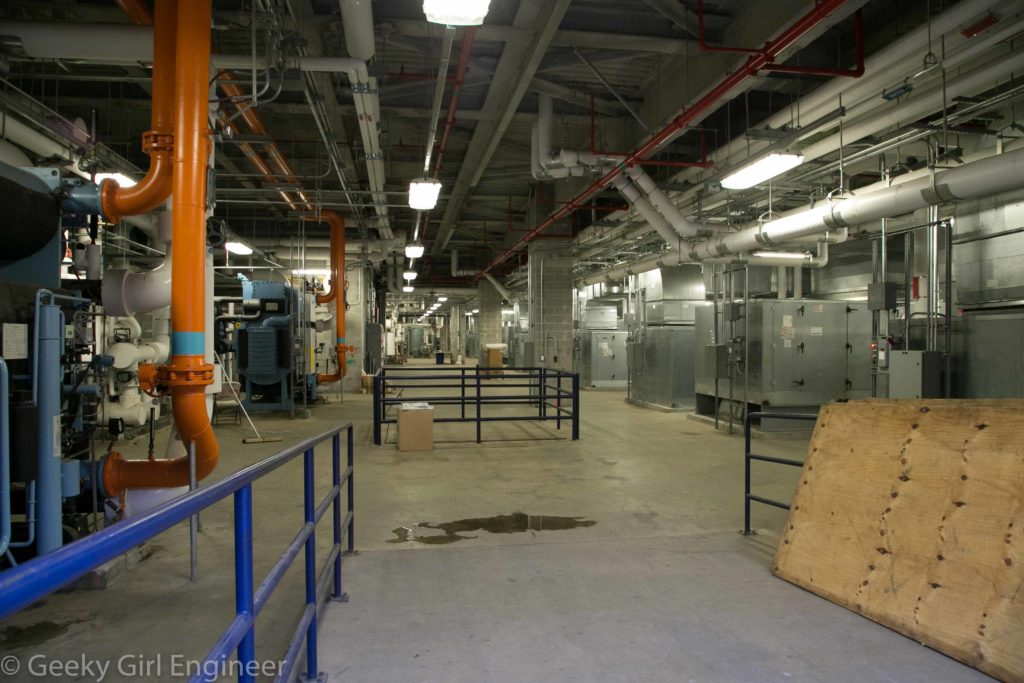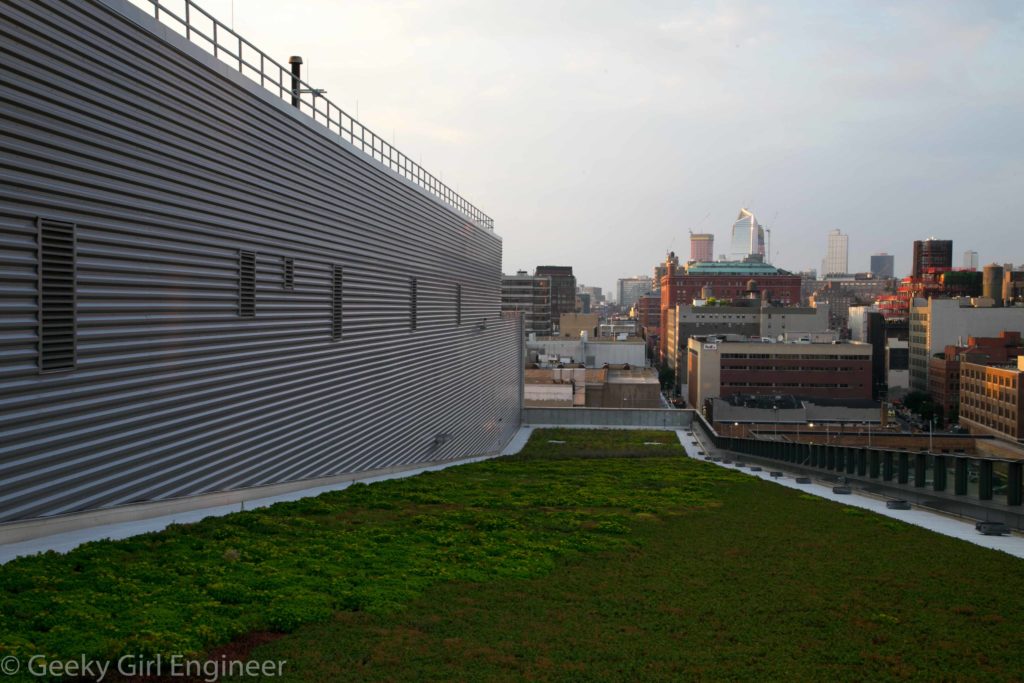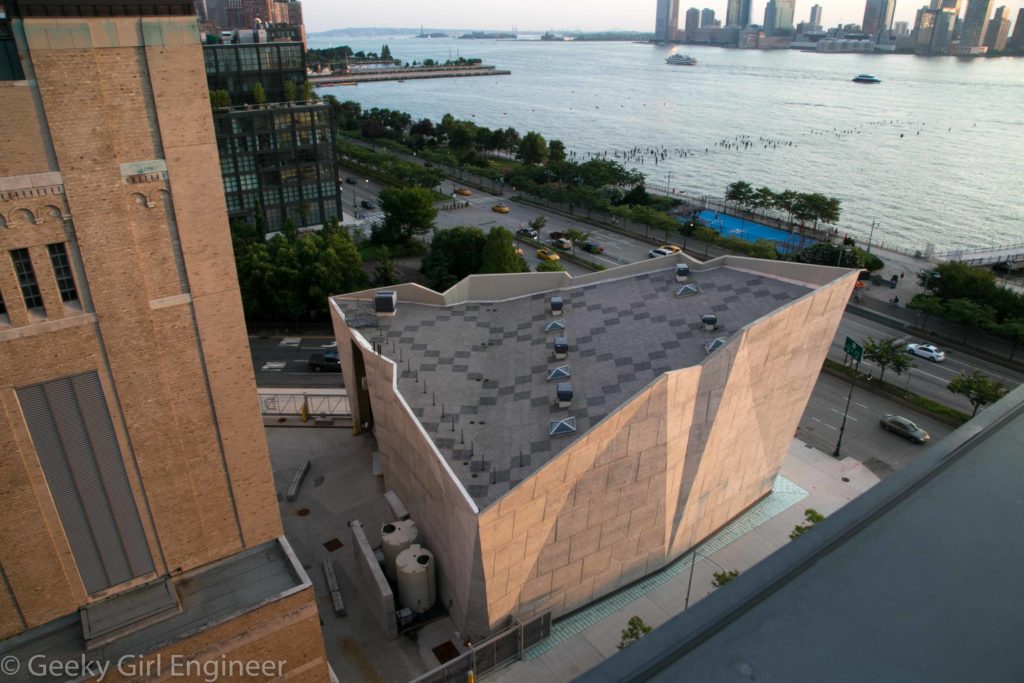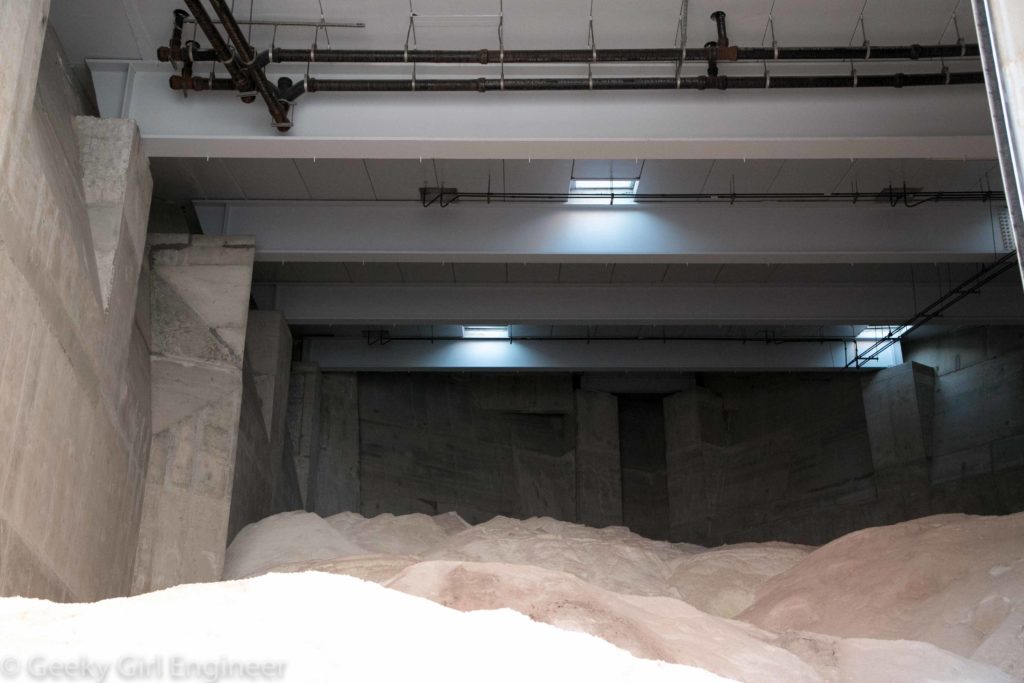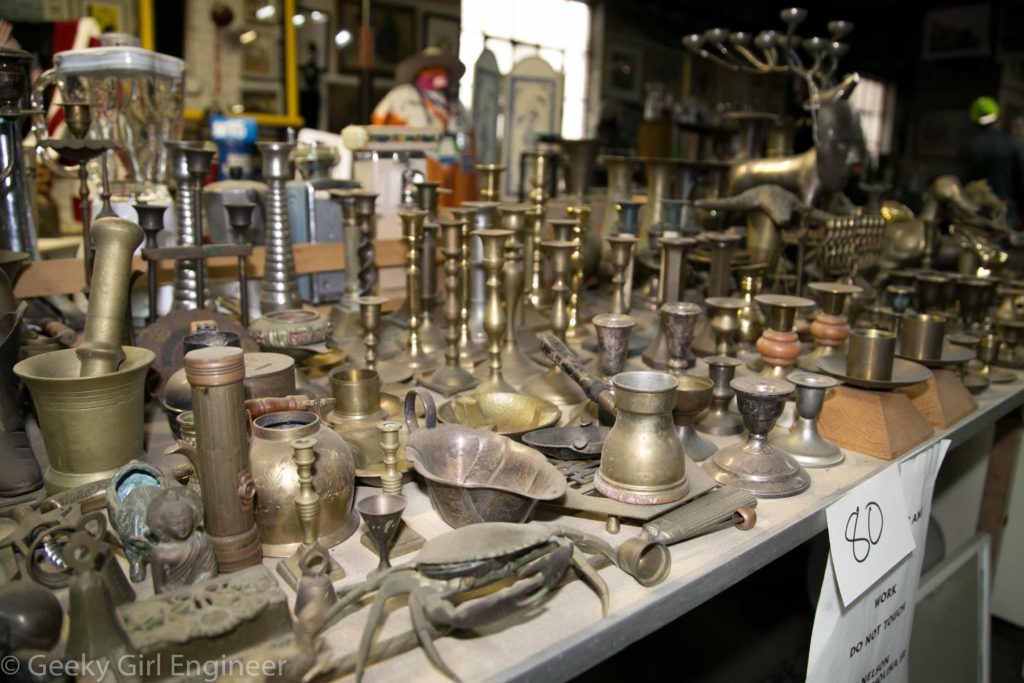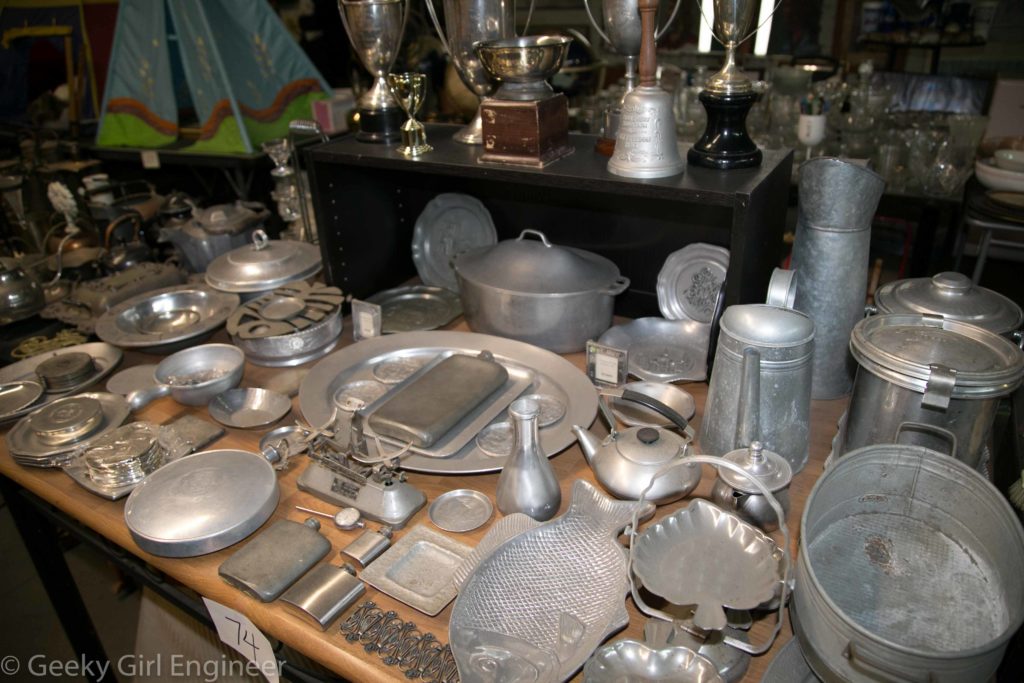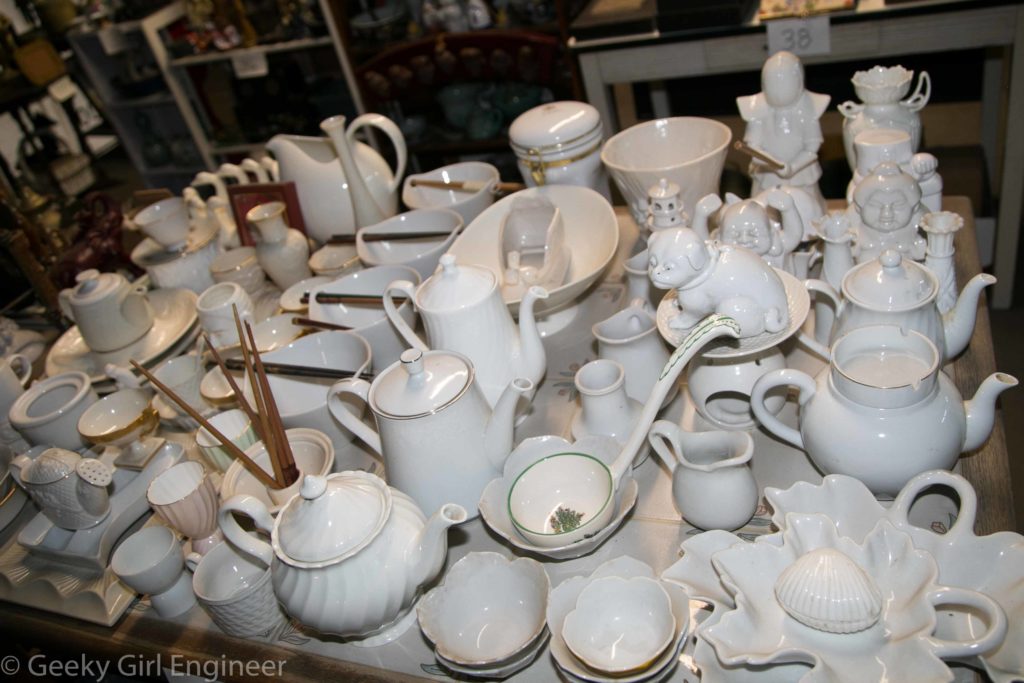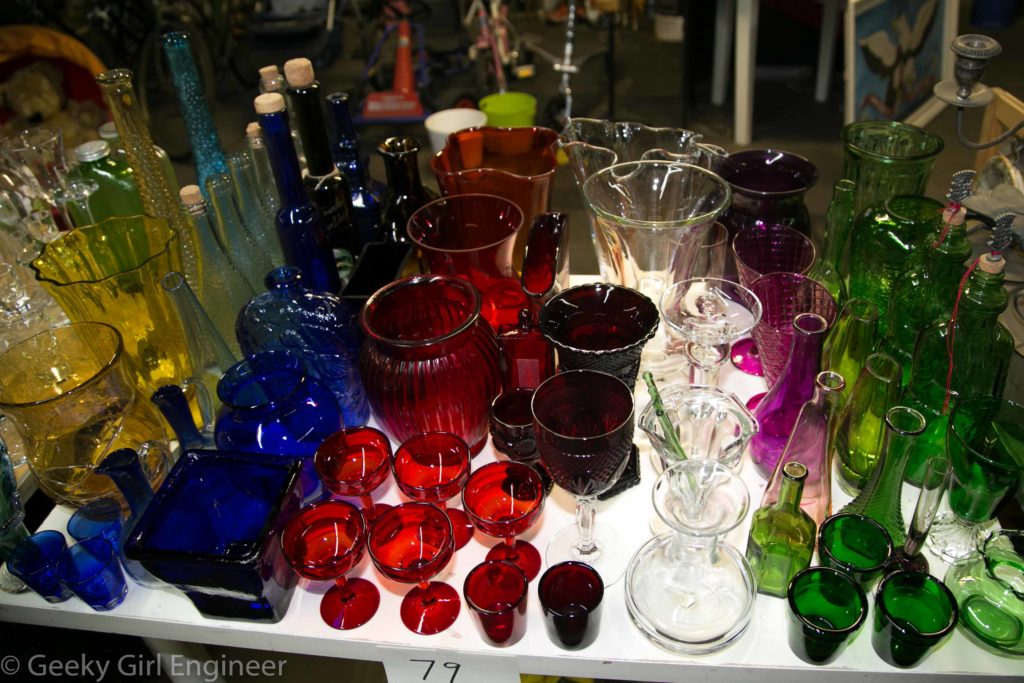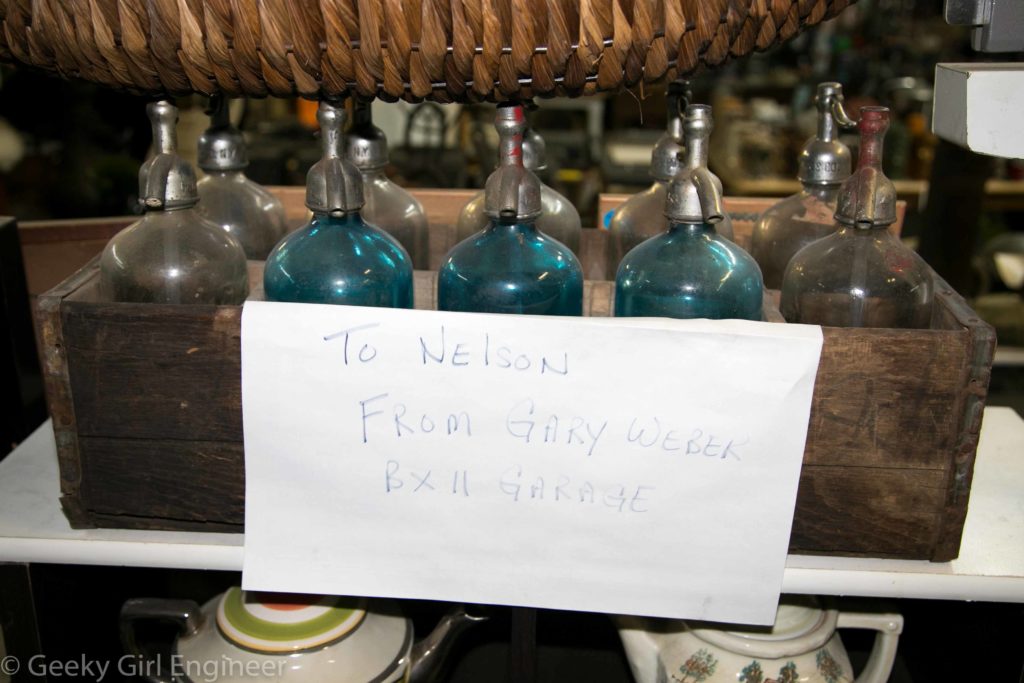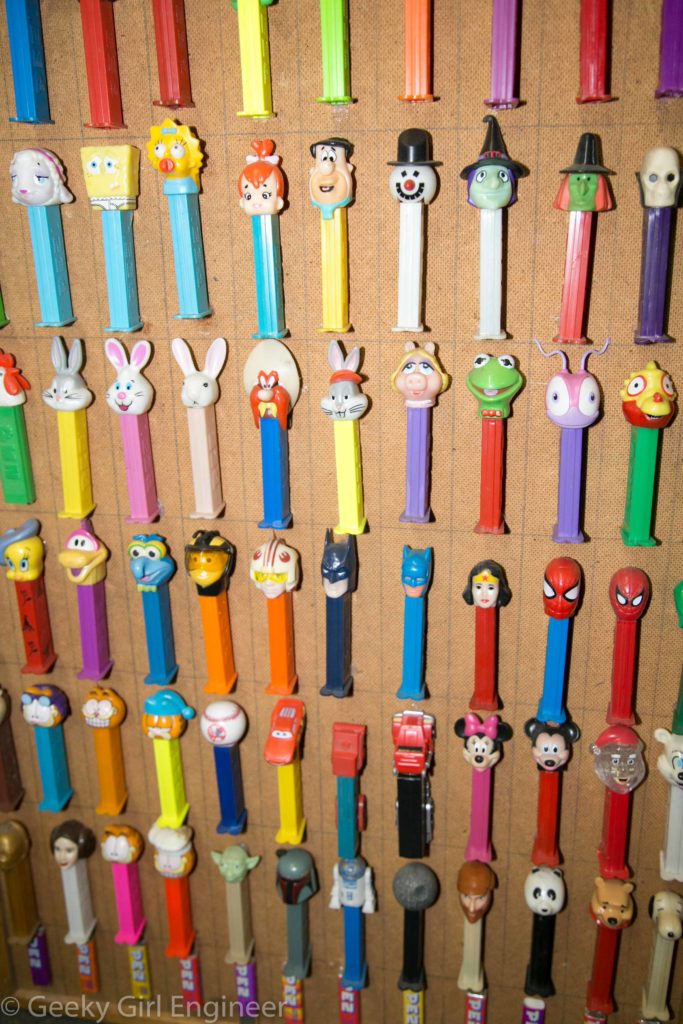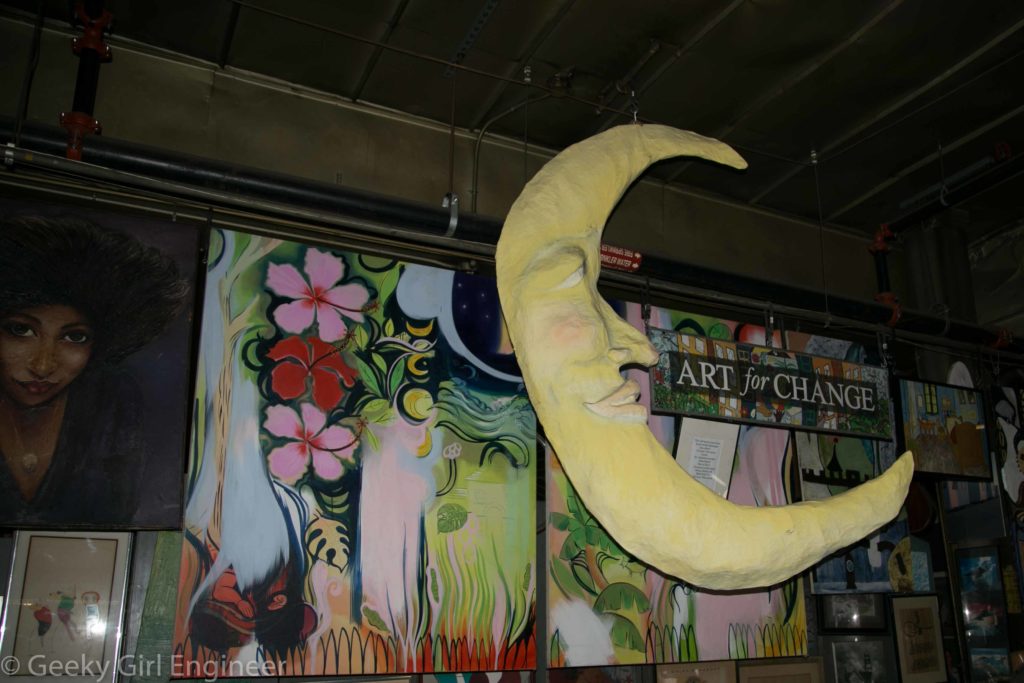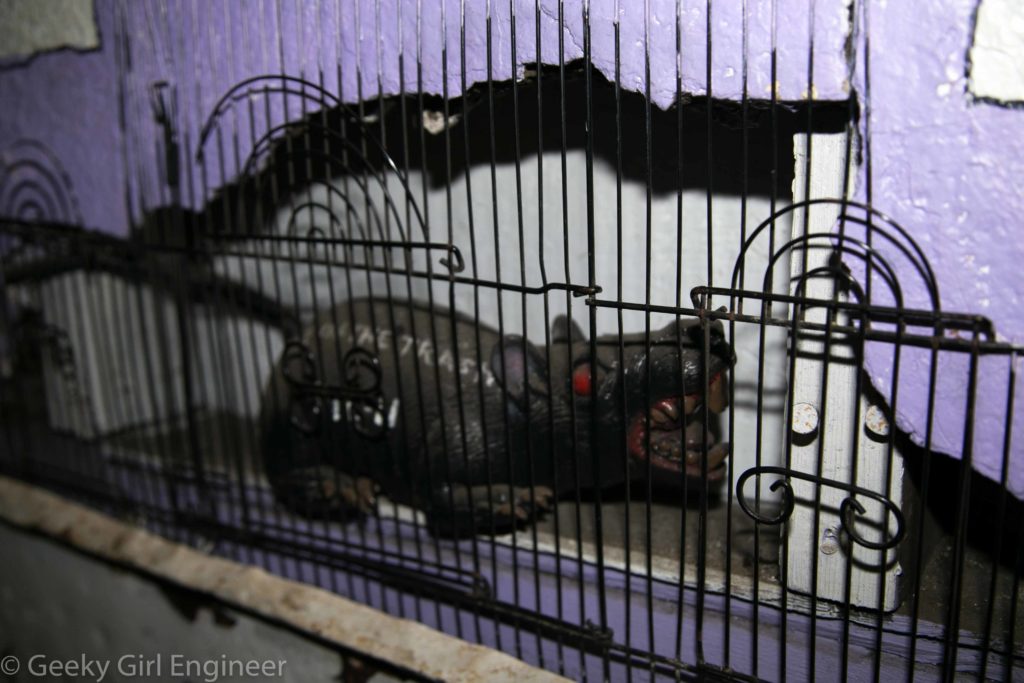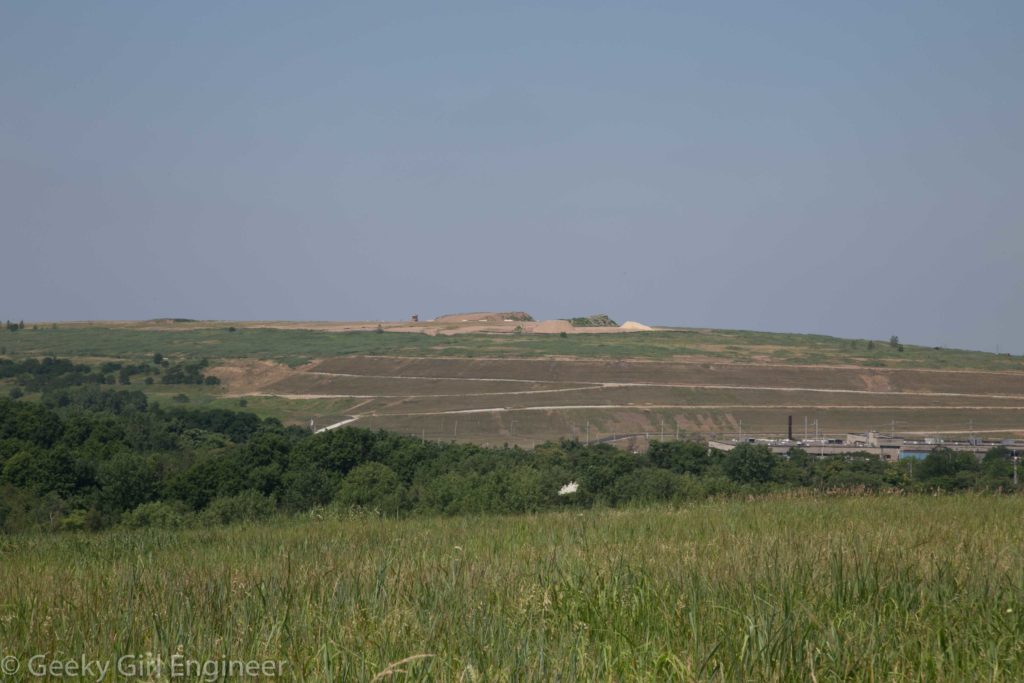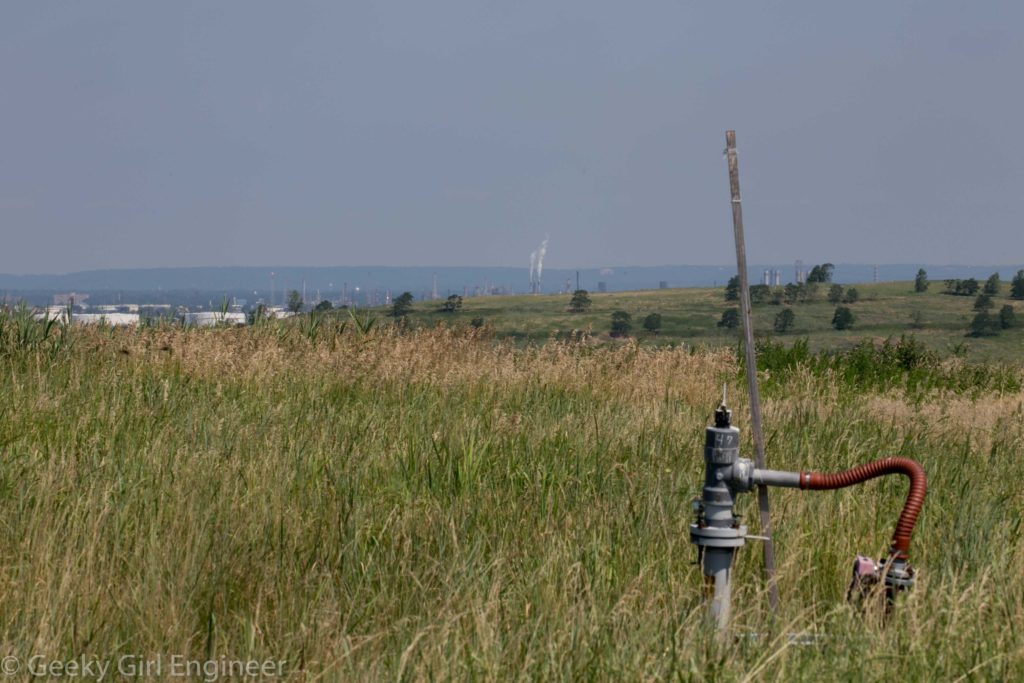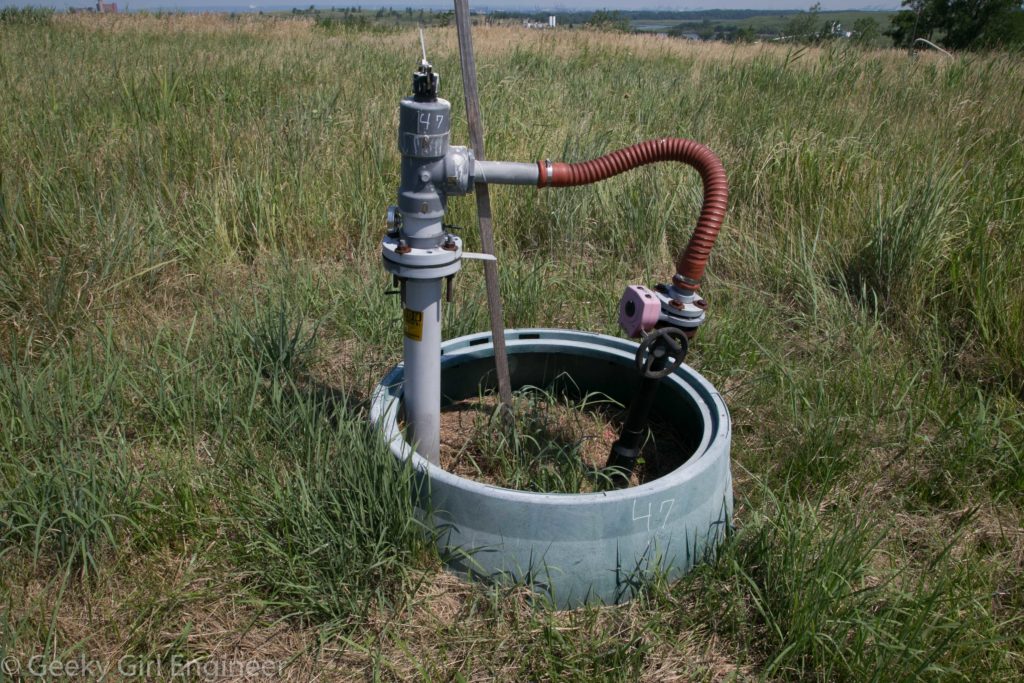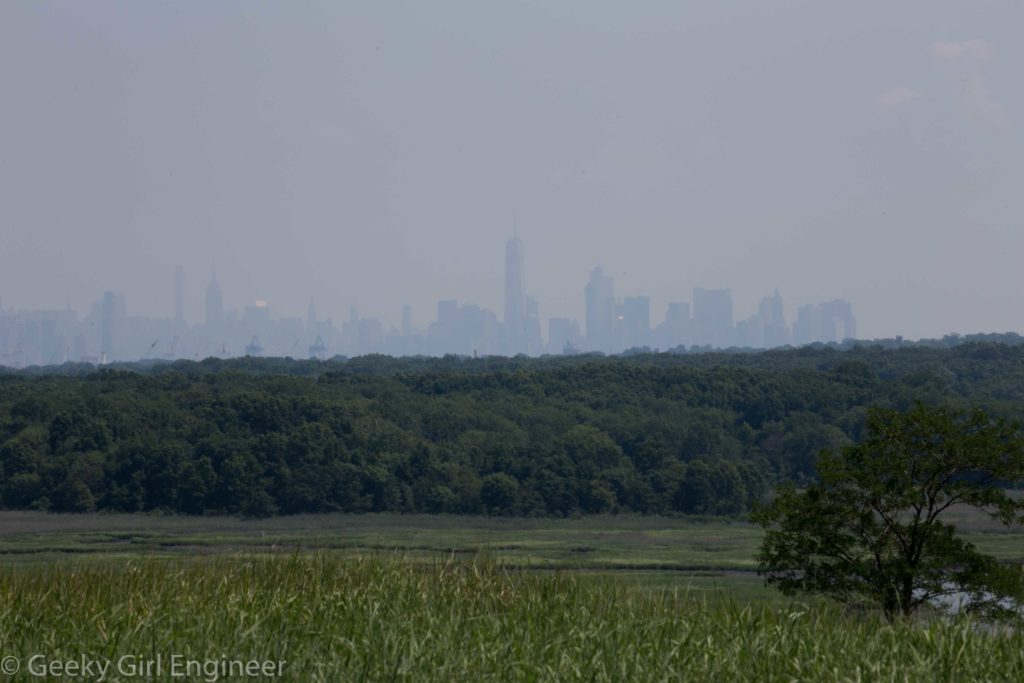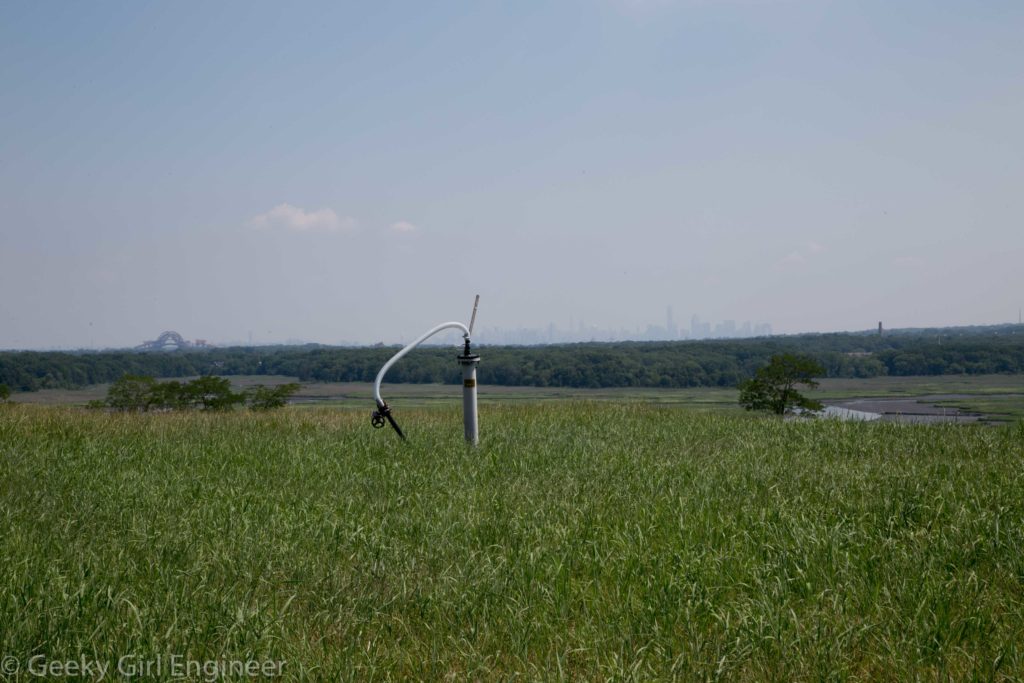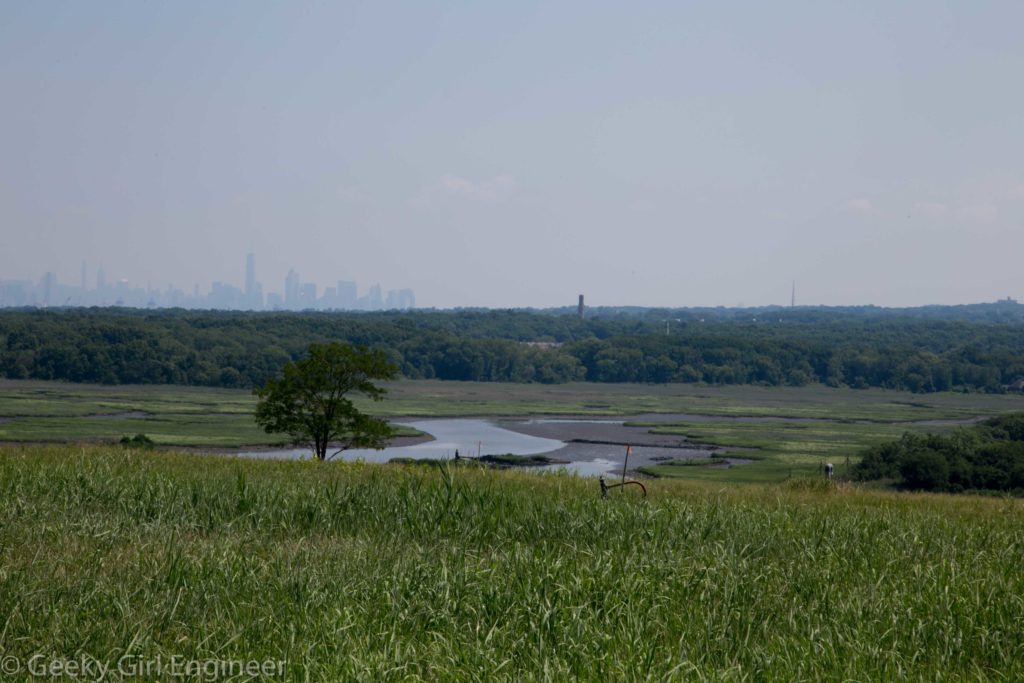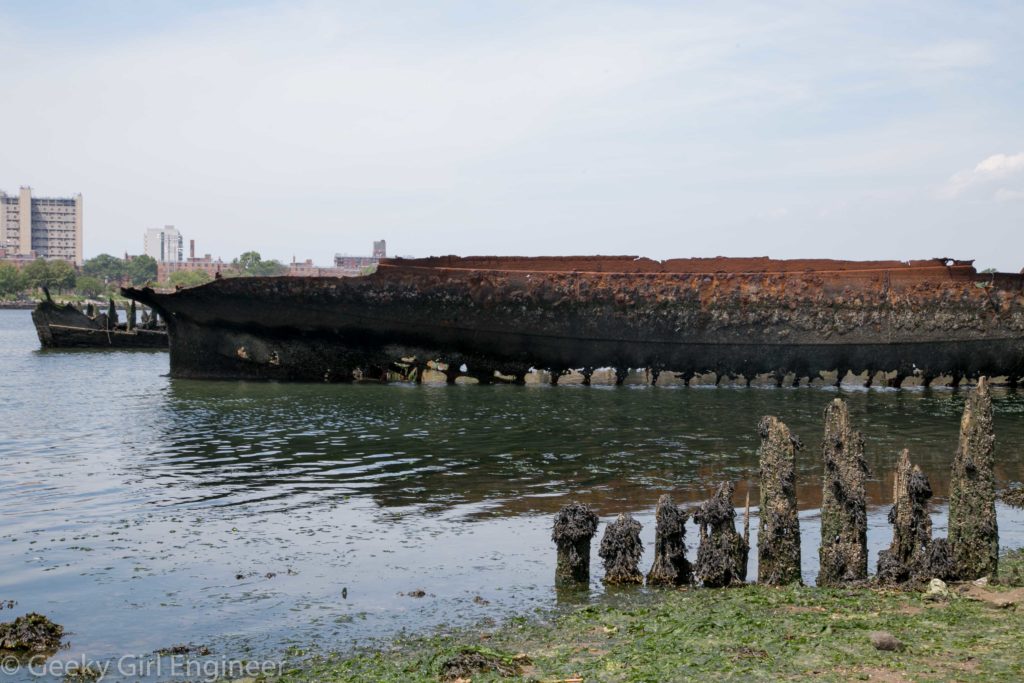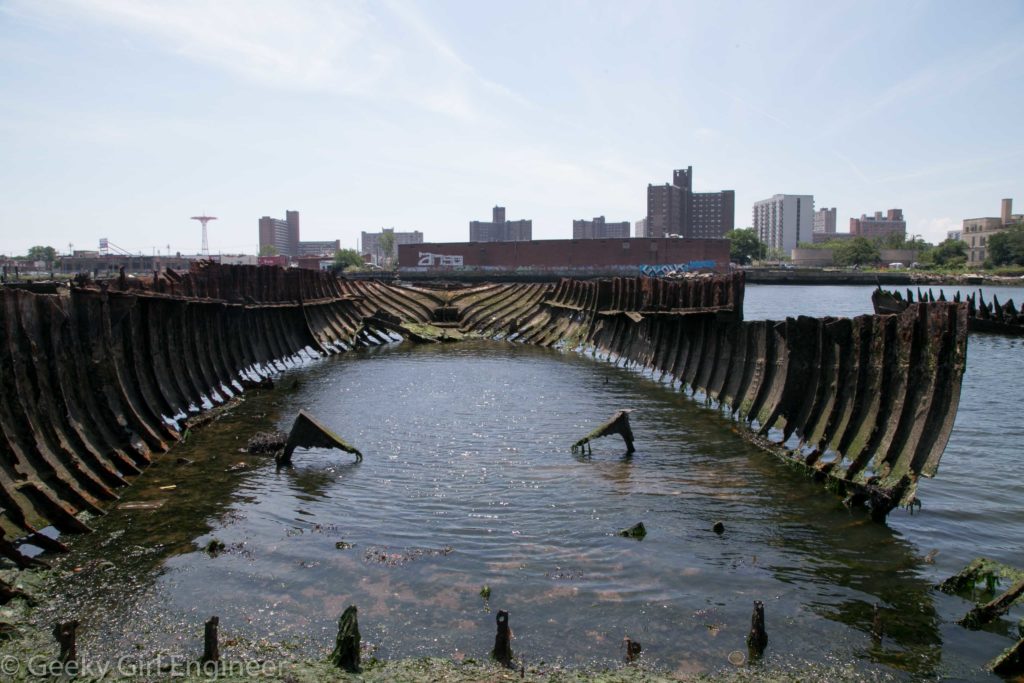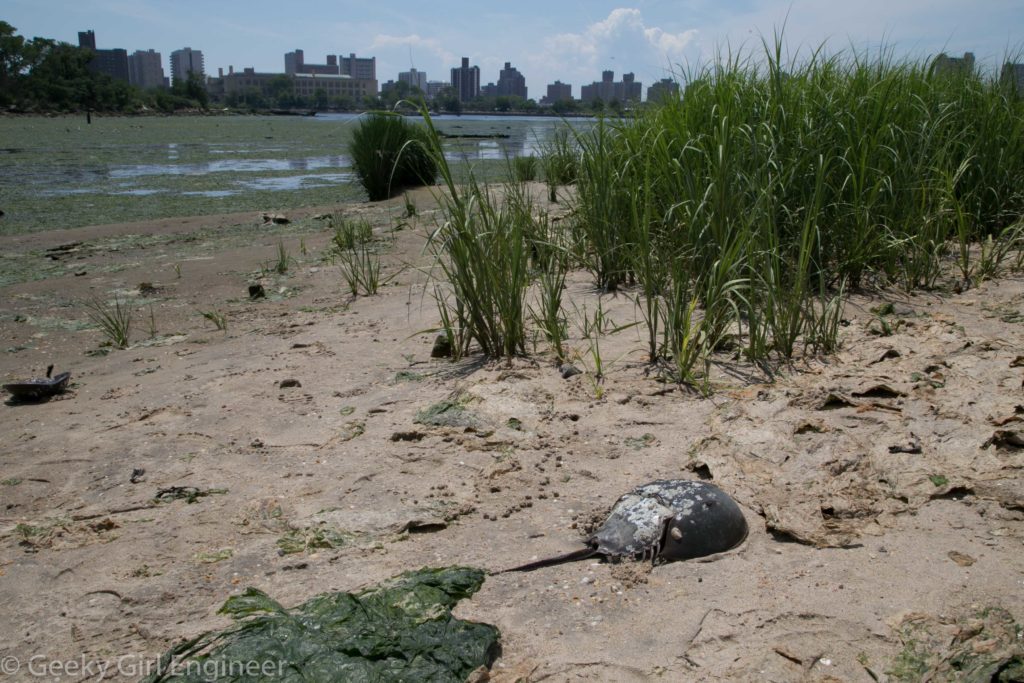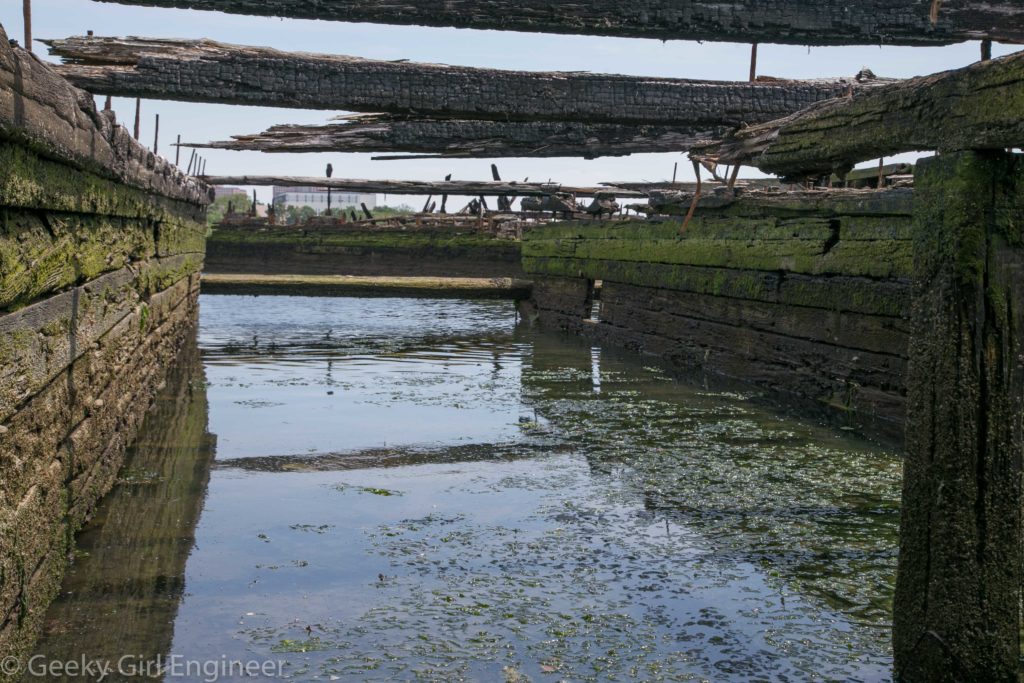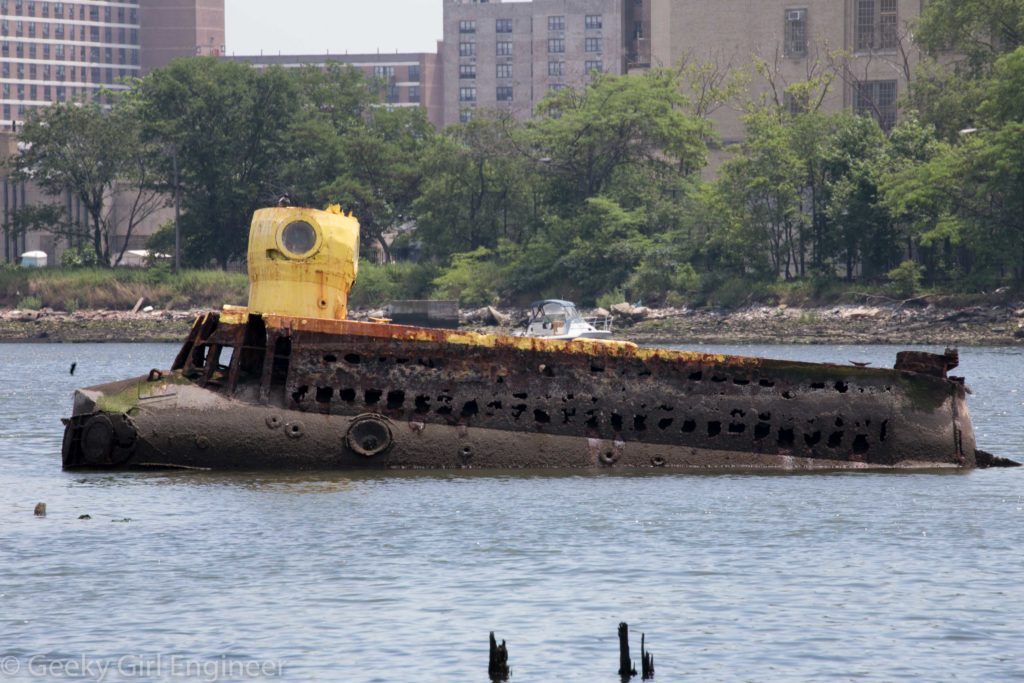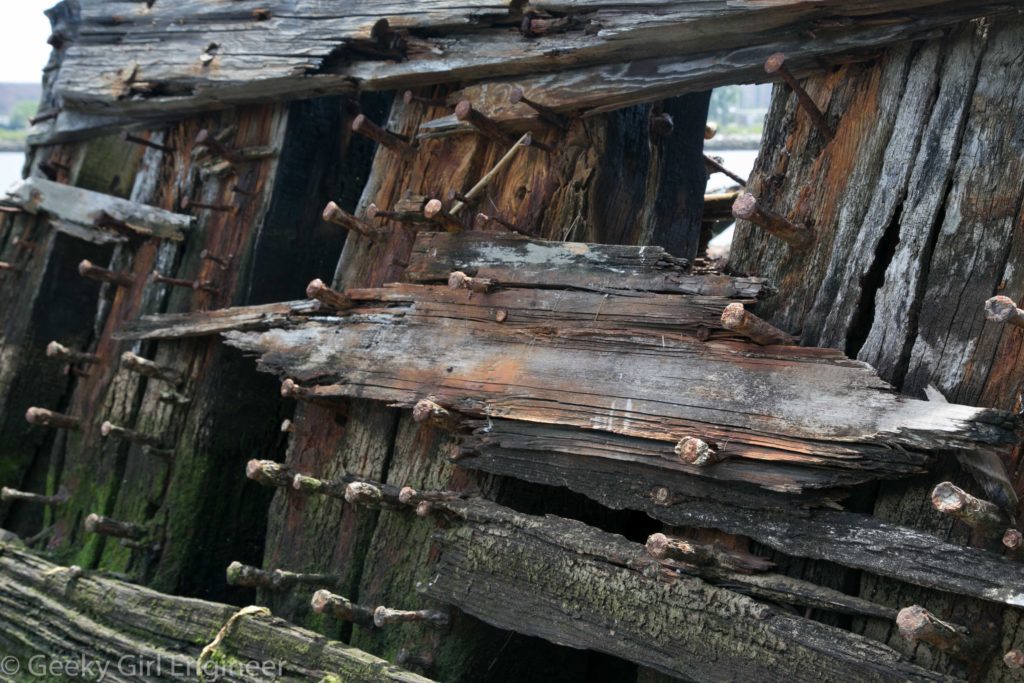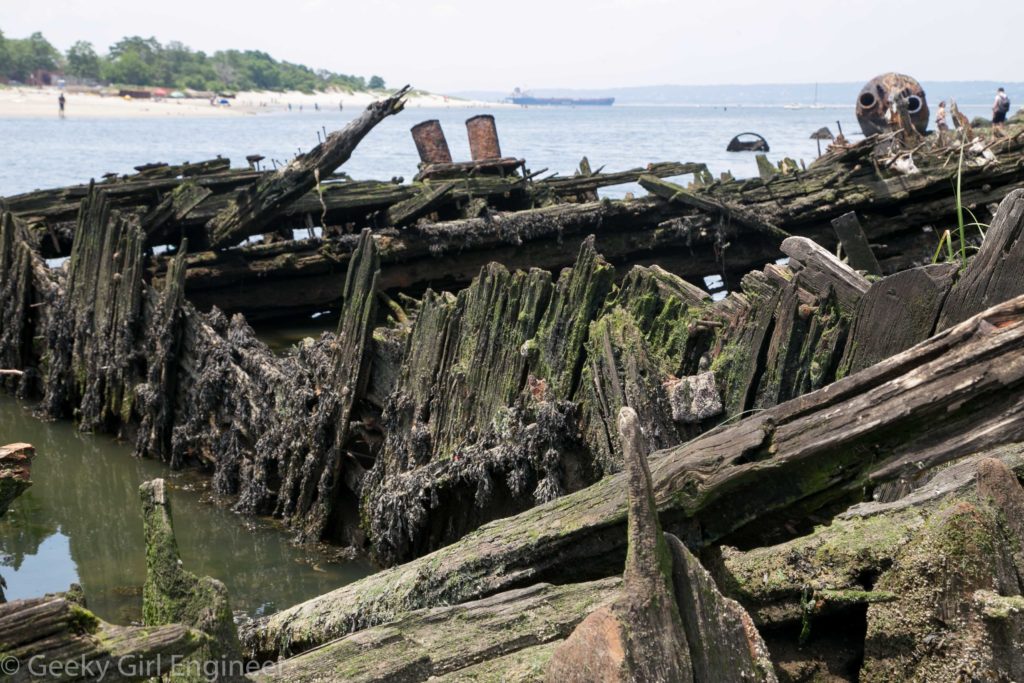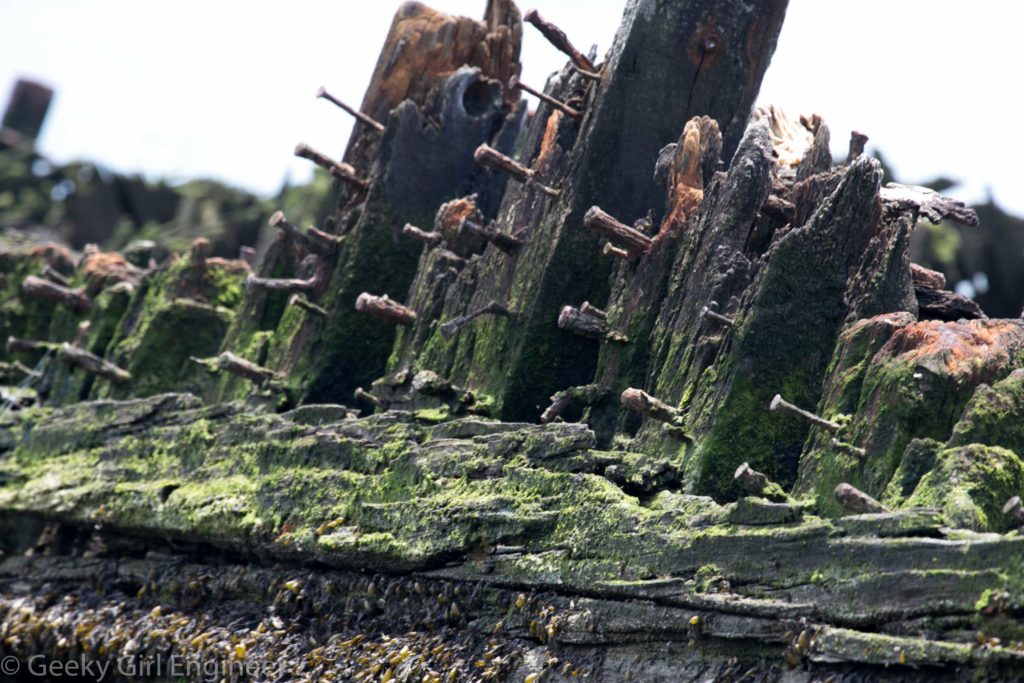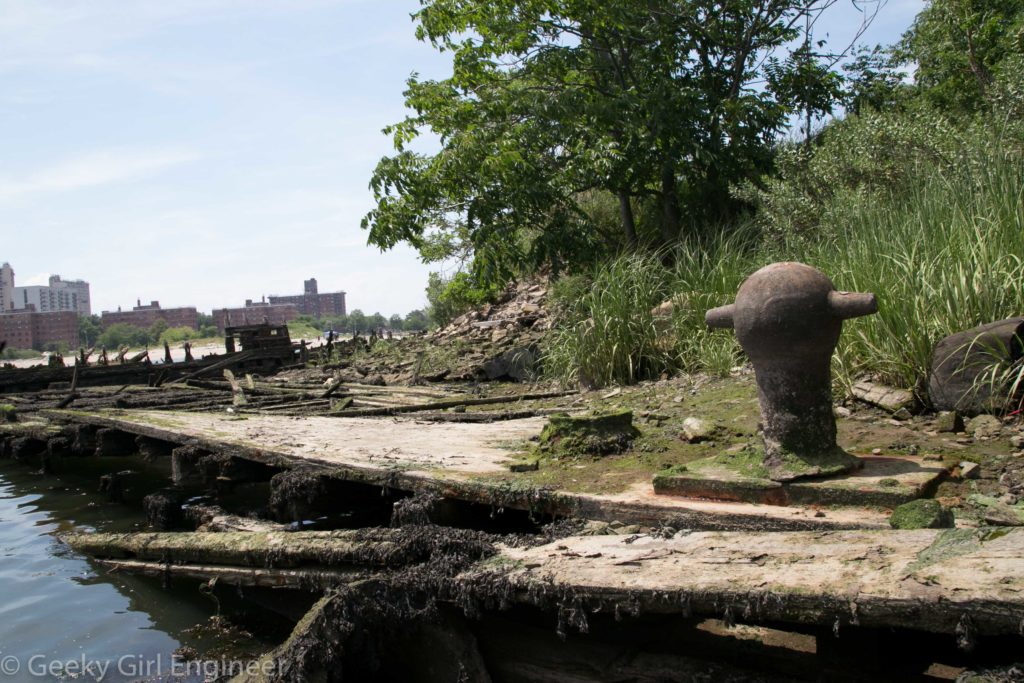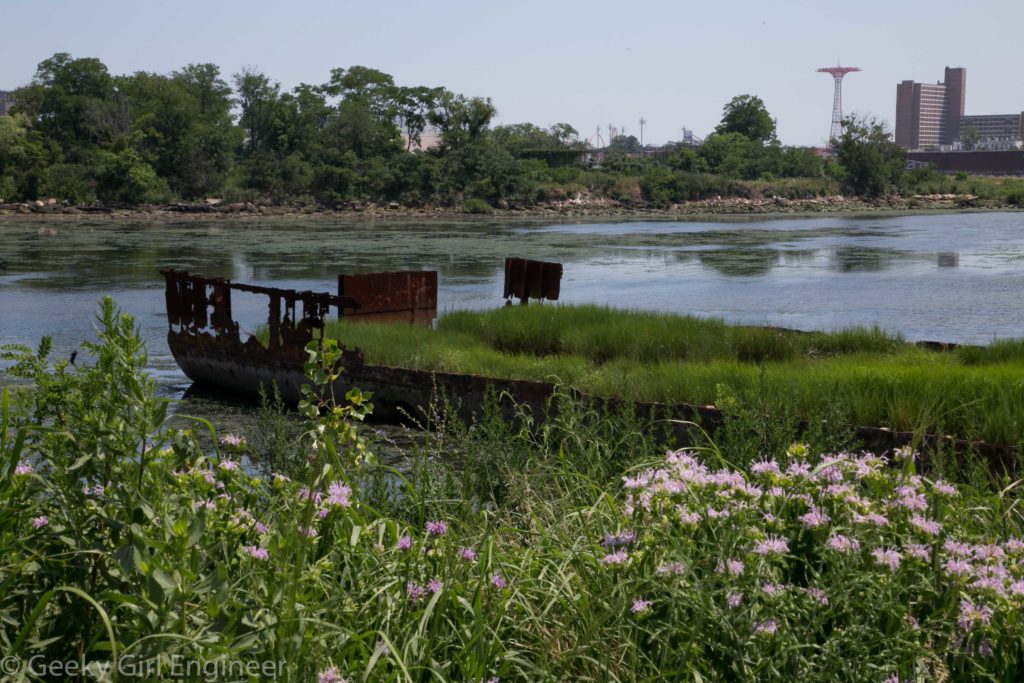Last week, I went for a guided walk with NYC H2O of historic Richmond Town, Staten Island to hear about the history there, in particular how the water affected the history. Historic Richmond Town is a neat little area as it is a park of historic buildings. If I read the information correctly, some of them were moved there to be part of the preservation area. There is a mill there that operated off the creek that runs by the area. Nearby and also part of our walk is Brookfield Park, which is a former landfill. From an environmental engineering perspective, it is nice to see what the landfill has become. Although it is not clear if remediation is ongoing, as the landfill was rather old, so it is not clear what engineering, if any, went into it.
Category Archives: Environment
COVID-19 Environmental Effects
For three days following September 11, 2001, civilian planes were grounded in the United States. It has been postulated that the diurnal temperature range in the U.S. was affected by the lack of contrails created by planes. Contrails, condensation trails, are formed by planes flying at high altitudes. It has been hypothesized that they can act as natural cirrus clouds for at least a short period of time after they form by absorbing long- wave radiation at night and reflecting more shortwave radiation into space throughout the day. Hence they can affect temperatures. The theory that the lack of contrails for three days following 9/11 affected the weather has been disputed though. The three days following the attacks formed a natural experiment that scientists looked at after the fact, but because the planes were only down for three days, that is not much time to have enough data.
Almost the entire world is in the middle of an unprecedented event because of the novel coronavirus often referred to as COVID-19. Anyone who can telework is. People are unfortunately getting either laid off or furloughed because the tourism and entertainment industries have taken such a hit. Restaurants are being forced to close or are only offering carryout service. People are not traveling if they don’t have to either to commute or to go to another city. Governments across the world are telling people to stay home if they are able, or in some cases are ordering them to stay home.
What effect will this have on the environment? Northern Italy has been hard hit by the virus. People in Venice are reporting that the water is the clearest it has been in decades. They are attributing that to the lack of boat traffic. At least initial reports seem to indicate that air pollution has decreased because of lack of vehicle traffic. I am curious though about all the impacts. Vehicle traffic would seem to be the most obvious. Most people are not leaving their house unless they have to, but deliveries may be going up. Airline traffic is definitely down. Train travel is probably down. Inner-city buses and subways are decreasing service due to decreased demand.
What are the other effects though? Water usage may not change in total, but I would hypothesize that it may change temporally. There is a general routine on weekdays. People wake up. Many take showers. They leave their house and go about business. They come home and then start housework among other things like running the dishwasher. Perhaps they do laundry, or perhaps like many the laundry is done on weekends. If a significant portion of the population is teleworking or just plain told not to come to work, they will probably run washing machine or dishwasher in the middle of the day between conference calls. Thus water demand instead of peaking in the early morning and then again in the evening may average out across the day. Same for wastewater flow.
Electricity may be even more interesting. In the early morning and late evening, more electricity is used by people in their residences. In the middle of the day, more people are at businesses or schools, so they are using more of their electricity there. Similar for telecommunications. What about when everyone is staying home and teleworking? In theory, the offices should use less electricity assuming there are smart devices there to not turn on lights if no movement or the HVAC reacts to need in the offices. However, the homes are probably using more electricity. How will this affect the electricity grid? Electricity needs will be more spread out around residences and less in concentrated urban areas. The high speed internet at the office is probably not going to be used as much, but will the internet from residences be strained from all the traffic? My employer has been having remote access issues, which I have no doubt stem from the number of employees working from home. How will this affect the telecommunications grid? Cellphone traffic will possibly go up, and landline traffic may go down.
Conversely, will trash be generate less, the same, or more trash? Not going out would in theory generate less trash. However, we are probably going to go through more gloves, masks, and other personal protective equipment in the coming months, and not just from medical personnel. Take out from a restaurant generates more trash at least from the consumer than eating in, but as people avoid restaurants in general, no trash is being generated there.
I am not in any way shape or form arguing that the virus may be good or bad for the environment. People are dying. I am not losing sight of that. However, I think it is likely that the virus will affect the environment, and I am curious how. It seems likely that self quarantines or at least staying home as much as possible may last weeks if not months, so that may be an adequate amount of time for an affect of some sort to be seen. Question is, what will the affect be?
Manure Slinger
One of the things I like about my job is that there is never a dull moment, and I never know what I am going to be doing next. Will I be reading a toxicology assessment? Will I be tracking down a CASRN? Will I be trying to explain in plain English some highly complex scientific issue? Will I be doing a statistical analysis? Will I be trying to figure if some hazardous chemical may or may not be associated with some particle source of contamination? Will I be trying to cleanup a database that has 11 (11!) different valid and invalid synonyms for cis-1,2-dichloroethene? It changes everyday.
A couple of weeks ago though set a new level for “ok this is different.” There was an urgent request from a big wig where I work to do some quick calculations on biosolids. If you don’t know what biosolids are, they are essentially treated sewage sludge. Wastewater treatment plants, which treat domestic wastewater (i.e. the stuff that goes down your sink and toilet), generally have three types of streams that exit the plant. The first is wastewater effluent, which is treated water that is clean and can be released into a river or lake, or if it treated enough can be used to water golf courses or things like that. The second is the sludge. The sludge is generally water with some solids. Sludge is treated, watery poop. It depends on the wastewater treatment plant as to how much treatment and how watery the sludge is. Some sludge is dewatered and composted on site, such that by the time it leaves the plant, it is pretty much just compost. Some is treated less. It depends on the state and the degree of treatment as to what happens to the biosolids. The states have different regulations to the final disposition of the biosolids. Biosolids can be incinerated, landfilled, or land-disposed. The third stream that leaves the wastewater treatment plant is only a stream in an engineering sense. It is non-degradable solid stuff that is screened out as soon as the wastewater enters the plant. This includes condoms, “flushable” wipes, rags, and all the other weird stuff people flush down the toilet or down the drain because out of sight is out of mind. Seriously though why on earth do so many people think condoms are flushable? All that human-made stuff (ok stuff made by humans but not made by the human gastrointestinal track) that people flush down the toilet (because the police came busting in?) or pour down the sink (because clearly you are not thinking about how much your are going to have to pay the plumber to clear you’re drains?) is screened out and sent straight to the landfill or incinerator. This stuff plus the fat and grease people put down the drains are what forms fatbergs.
It is the land-disposal of the second stream of biosolids that was involved in the urgent calculations I needed to do. Essentially, if the biosolids are highly treated at the wastewater treatment, composted at high temperatures for a long enough period of time, and tested for certain contaminants, mainly heavy metals, as required by law, and the state allows it, then they can be used as fertilizer on land. This is not a new concept. For hundreds of years, night soil, as it was called then, was collected and used as fertilizer. It wasn’t even treated. The composting at the wastewater treatment plant, if done correctly, should kill the pathogens in the poop. The controversial question though is whether or not the biosolids contain chemical contaminants that would not be removed by composting. That is a whole other subject.
My task though was to do some calculations on scenarios involving biosolids. While I am familiar with the concept of biosolids and their final disposition, I needed to do some research on their physical properties. Turns out, finding an average density for biosolids is much easier said than done. The internet gave me answers that were all over the map. The other part of my calculations required me to make some assumptions about how the biosolids were transported to fields or farms if they are land applied. I had never actually considered until that moment how watery, treated poop is transported. As weird as I am considering I travel to visit landfills, wastewater treatment plants, and rail yards and considering how I eagerly read books about poop, I never really considered the transport of biosolids. [I cannot stress enough how much I loved Rose George’s The Big Necessity.] Time was of the essence, we needed some sort of estimate for the question presented, so I grabbed what seemed like reasonable numbers for the physical properties of biosolids and how they transported, and I did my best to calculate with some sort of reasonable confidence the numbers that would answer the question being asked by the big wig. I actually rather enjoyed this rather unusual request. I learned at least a little bit about the details of biosolids.
This week though, the same question came up. I was asked to confirm my calculations, but I was given more time to consider the question. Thus, I had been considering the question for a couple of weeks, and I had had time to ask colleagues as to good sources of information on biosolids. I was able to devote more time to finding good estimates for the information I needed. In the course of my research, I learned to my great joy that biosolids and regular manure are often (normally?) land applied using an invention called a manure slinger. I swear this is true. Humans invented a device called a manure slinger, and in the grand tradition of engineering inventions, it does exactly what its name implies: it slings manure. I hope you can understand my joy that this exists. It is similar to my joy when I discovered that humans had invented a fish cannon that true to its name is a cannon that shoots fish. Engineers aren’t really that creative in the naming department. Heat exchangers exchange heat. Catalytic converters use a catalyst to convert one thing to another. [In the case of your car, it uses a catalyst to convert harmful gases to less harmful gases.] Circuit breakers break an electrical circuit. This leads to my new favorite invention, the manure slinger which slings manure. Do an internet search on manure slinger. You will find photos and videos of them. Videos of a manure slinger slinging manure brought me even more joy. Yes, I am weird, but if you have ever visited my website before, you should know that by now.
Now I was armed with good experimental information on the physical properties of biosolids and with very good information as to how they were transported and land applied. I redid my initial calculations checking my work and with far more confidence in the answer. I could prepare an answer for management to send to the big wig with as much confidence as could be expected on the somewhat unusual question being asked. Further, today I was asked to help prepare communication material regarding the question that had been asked about biosolids. To my even greater joy, than simply learning that manure slingers exist, I was able to write (I swear) scientific information for the communication material that involved the phrase manure slinger numerous times in a paragraph. I have no idea if the communication material will ever see the light of day, and if it does, if the communication people or management will be fuddy duddies and remove the phrase manure slinger and substitute with something far more mundane sounding, but at least initially, I had the joy of writing a completely serious, scientific paragraph using phrase manure slinger. It was a great way to end the week.
Mother Clara Hale Bus Depot
I recently got the opportunity to tour New York’s MTA’s Mother Clara Hale Bus Depot with the New York Transit Museum. It is the newest bus depot in New York, and it features many innovative and environmentally friendly design. It has a green roof. Stormwater from the roof in reused in the facility for bus wash. It has a thermal wall that absorbs heat in the winter. It is a really well designed facility, and it is huge. There are also many buses at the bus depot because of course the bus depot is for maintenance and repairs.


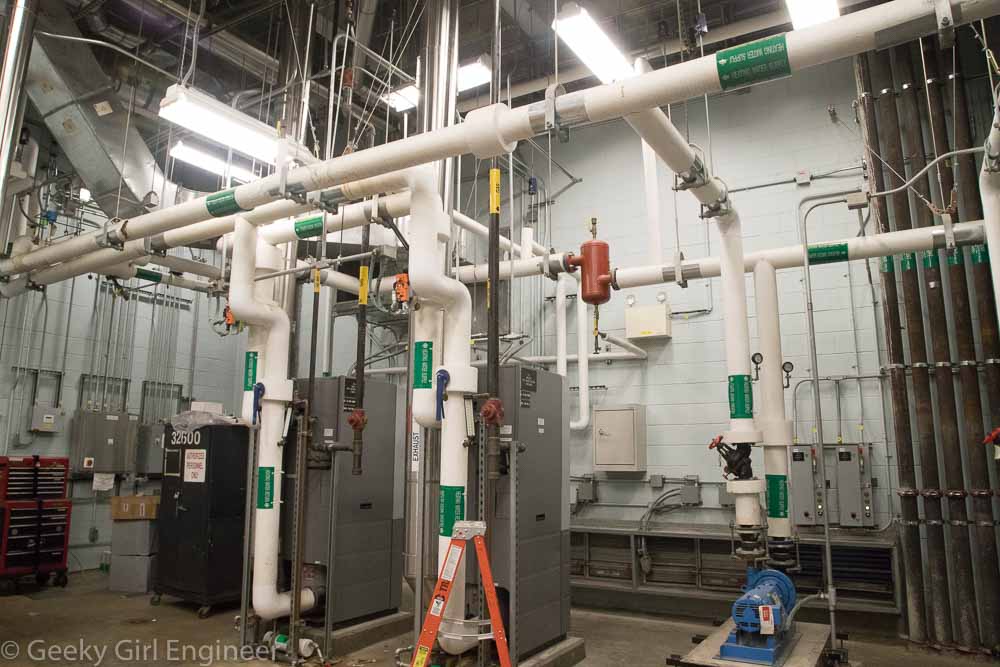

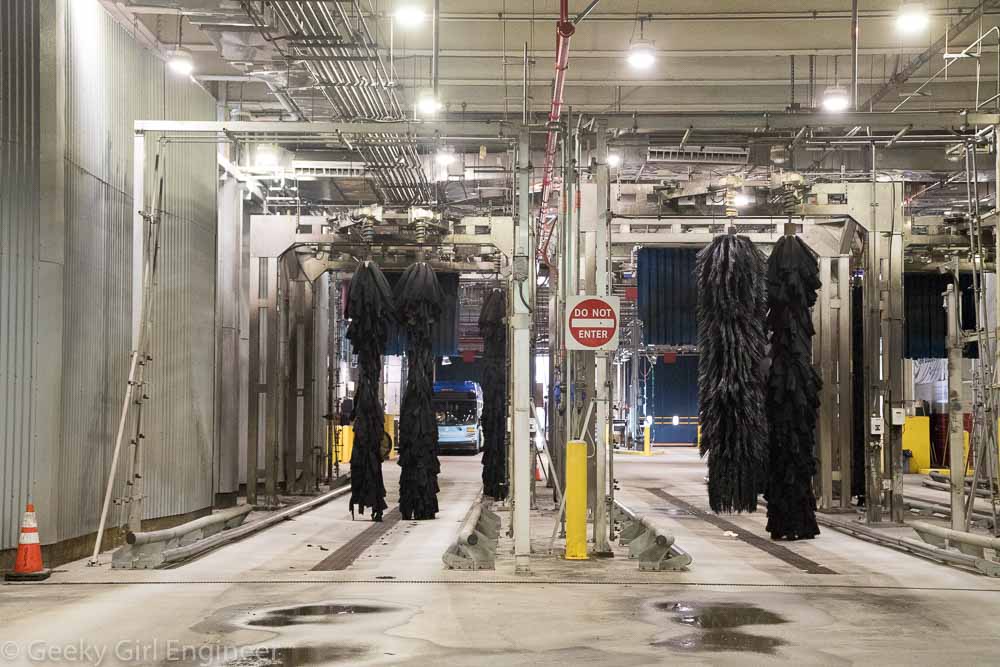
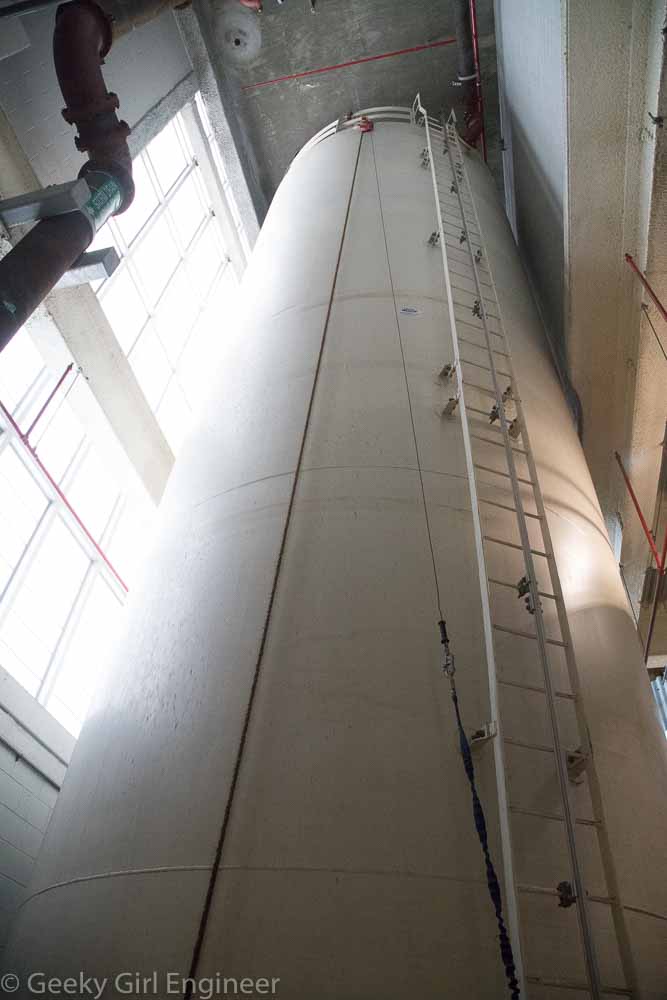






Waterborne diseases
I am still irritated by the one sided New York Times article on people who think “raw water” is better than treated water. I wrote previously about the various microorganisms and chemicals that can be found naturally in groundwater, but I wanted to expand a bit on water borne diseases and why we treat water. Not all water borne diseases are a result of microorganisms.
High nitrates in water can lead to blue-baby syndrome, more properly known as infant methemoglobinemia. Nitrates is associated with human-related water contamination, especially agriculture.
Arsenic occurs naturally in many groundwater sources. The United States Geological Survey (USGS) has mapped arsenic in groundwater based on a great deal of sampling. Arsenic in groundwater is particularly problematic in southeast Asia. Arsenic can cause cancer, cardiovascular disease, and skin lesions, among other issues.
Other naturally occurring metals and radioactive elements can be found in groundwater that can cause long term health problems. Groundwater and surface can also become contaminated from human activities with volatile organic compounds, pesticides, and other chemicals that you don’t generally want to ingest.
Then there are all the illnesses caused by microorganisms in water. According to the Centers for Disease Control and Prevention (CDC), the most common waterborne disease outbreak for 2013-2014 was Legionella, which I admit surprised me. Legionella causes respiratory illness due to inhalation of it, which is why it is normally associated with people inhaling the mist of cooling towers and air conditioning systems. [This is how it was first discovered and named when members of the American Legion got sick at a convention in Philadelphia hotel with unsterilized water in a cooling system.]
Most waterborne microorganism caused illness cause gastrointestinal illness though. Most people have heard of Giardia lamblia, which can cause diarrhea. There is Shigella which causes diarrhea, fever, and stomach cramps. E. coli is another common microorganism that can cause gastrointestinal illness found in both food and water. Cryptosporidium is a nasty microorganism that can cause illness. The reason I call it nasty though is because the parasite is protected by a shell that makes it particularly difficult to kill with disinfectants.
While luckily not a problem in the U.S., cholera, another waterborne disease, has killed many people throughout history. Yemen is currently in the midst of a horrible outbreak that has killed thousands and infected a million people. The cholera outbreak in London in 1854 is considered by most to be when the field of epidemiology started when John Snow, a physician, removed the Broad Street pump handle to show that that pump was the cause of most of the cases.
Point of all this is, be thankful for modern water treatment. There are very few waterborne illnesses in the U.S. It is rather rare for a person to get sick from water that comes from a public water supply, and when they do, most often because something has gone wrong at the water treatment plant. There are other issues of course, such as old water systems with lead in the pipes or solder. The source water can also become contaminated with something that the water treatment plant was not designed to treat. On the whole though, you are much more likely to become ill from untreated water then from treated water.
Raw Water
The New York Times ran an article about people who like to drink “raw water.” Evidently there are people who do not like tap water and like to drink unfiltered, untreated, unsterilized water. According to the article, some people like the taste. Fair enough. Most of the time when people object to the taste of tap water, what they are objecting to is the taste of chlorine or chloramines that are added to kill bacteria that can make you sick. Using a filter at the tap or simply putting the water in a container and letting it sit in the refrigerator overnight will solve the taste issue. One of the parts of this almost completely one-sided article that I find the most telling and amusing is this paragraph.
“He said “real water” should expire after a few months. His does. “It stays most fresh within one lunar cycle of delivery,” he said. “If it sits around too long, it’ll turn green. People don’t even realize that because all their water’s dead, so they never see it turn green.””
Water does not turn green unless there is something growing in it. The person quoted understands that there are microorganisms (algae most likely because it turns green) growing in the water but thinks that is good thing. There is a reason why water purveyors are required to disinfect water. Bacteria and other microorganisms can cause illness. Not all microorganisms call illness, and some can have beneficial effects (i.e. probiotics). Groundwater does normally have less microorganisms than surface water, but it is not sterile. Further, hot springs does not mean sterile. Scientists have been studying the microorganisms in hot springs like the geysers at Yellowstone National Park for years. Those microorganisms are often called extremophiles because they are so different from the “normal” microorganisms we normally find in less extreme settings.
Some people are concerned about the fluoride that is added to water to help dental health, and a person quoted in this articles believes it is a mind-control drug. Fluoride does help dental health, and it is not a mind-control drug. I really don’t even know where to go with the claim that fluoride is a mind-control drug, so I have decided not to address it right now. Also fluoride can be naturally occurring in groundwater.
However, here, I would like to address the issues with not treating or filtering water and all the other contaminants that can be in water, including but not limited to the microorganisms. The Environmental Protection Agency (EPA) sets limits on microorganisms, disinfectants, disinfectant byproducts, inorganic, organics, and radionuclides. Bottled water is regulated by the Food and Drug Administration (FDA), not the EPA, and the regulations and testing requirements are different. Tap water is tested more frequently and has more monitoring requirements.
Just because water comes from the ground does not mean that it is pure or clean. Bacteria naturally grows in groundwater. Groundwater normally has ions including metals in it, and not all of those metals are good for people. The only way to know if it is free of contaminants is to test it. The United States Geological Survey (USGS) studies and samples groundwater and surface water across the United States. I randomly pulled several reports by searching on water quality and groundwater at USGS’s website. This report of sampling from 2014 found heavy metals in almost all groundwater samples, as well as pesticides and volatile organic compounds (VOCs). “Groundwater Quality in the Yuba River and Bear River Watersheds, Sierra Nevada, California” indicates that while the groundwater is mostly clean, a few samples had high concentrations of four elements (arsenic, barium, molybdenum, and strontium), a few samples had high radioactivity, and coliforms were detected in over 20% of wells. This report on groundwater quality in Lycoming County, Pennsylvania shows 52% of the samples exceed the EPA standard for total coliform, 12% of the wells exceeded the Maximum Contaminant Level (MCL) for arsenic, 67% exceeded the MCL for Radon-222, and a few exceeded the reporting limit for various VOCs.”Groundwater Quality in the Northern Atlantic Coastal Plain Aquifer System, Eastern United States” found fluoride, arsenic, and manganese in high concentrations in some of the samples. [Note this is naturally occurring fluoride.] Radioactive constituents were present at high levels in about 1% of the samples and at moderate levels in about 12%.
This is the reason why water treatment plants are not one size fits all. All water treatment plants have to disinfect the water. They can’t test for all microorganisms, but they test for indicator microorganisms like total coliform to determine how much disinfect is needed. They also have to test for VOCs, radionuclides, and numerous other indicators. They also test for smell and taste. Common processes at water treatment plants include flocculation and filtration to remove dissolved and suspended particles (this includes microorganisms). The source water will dictate what processes are used and the amount of treatment. The point of the treatment is to clean the water, make sure it meets the requirements set by the EPA and whatever respective state the plant is in, and prevent the people from drinking it from getting sick because of the water. The people of the United States can thank water treatment for better health. Drinking “raw water” means returning to the taking chances on acquiring an illness that people of the past were happy to do away with when water treatment plants became standard and laws like the Safe Drinking Water Act were passed. Edited to add: The EPA sets National Primary Drinking Water Regulations (NPDWR), which are legally enforceable primary standards and treatment techniques that apply to public water systems, and clicking on this embedded link will take to you a list of them along with the health problems that can occur if the water contains one of those chemicals or microorganisms above that limit.
Author’s Note: When I originally wrote this, I referred to microorganisms that live in extreme settings as xenophiles. I meant to say extremophiles. I have corrected it, and I apologize for any confusion. This is what happens when I edit my own writing. I think I had xenobiotics in my head. Xenobiotic is term generally used to describe chemicals that are foreign to body or ecosystem. In my field, I often use that term when speaking of a contaminant in the environment that needs to be cleaned up. You might find xenobiotics in raw water.
DSNY Manhattan 1/2/5 Sanitation Garage
A few weeks ago, I got a chance to visit the brand new DSNY Manhattan 1/2/5 Sanitation Garage with Open House New York. The multilevel building houses three different garages, one each for Manhattan districts 1, 2, and 5. Each garage has its own floor, and there is a shared area for vehicle repairs. The building has LEED certification and includes many green features including a wonderful green roof also. Across the street is a salt shed built to resemble salt crystals. Both the garage and salt shed have really nice, innovative architecture.
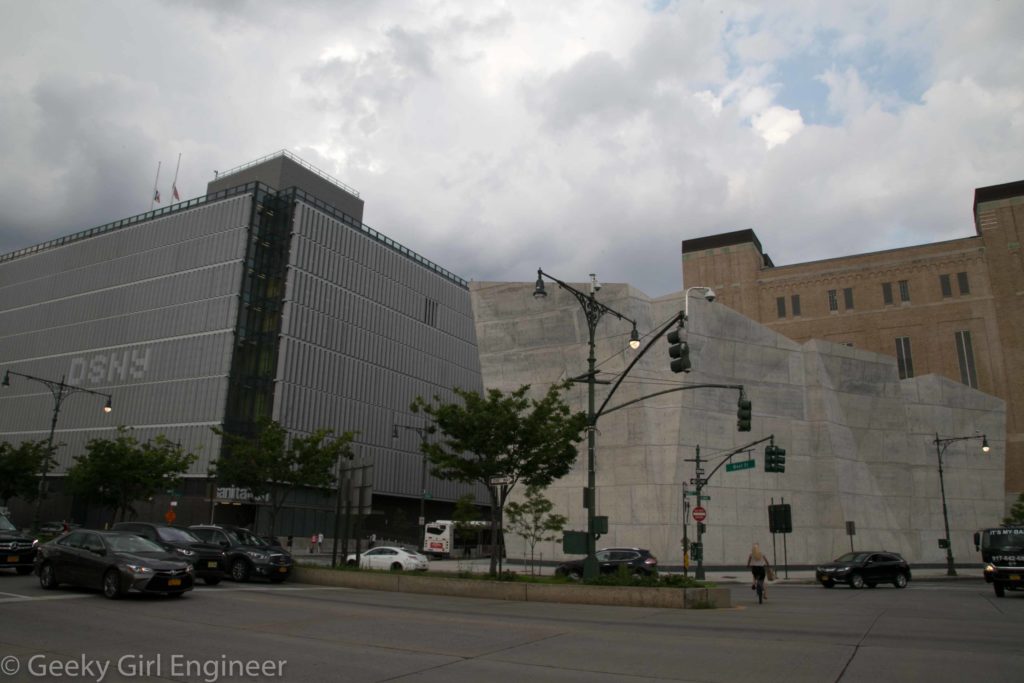
DSNY Manhattan 1/2/5 Garage on left, salt shed on right, with Holland Tunnel ventilation tower in back
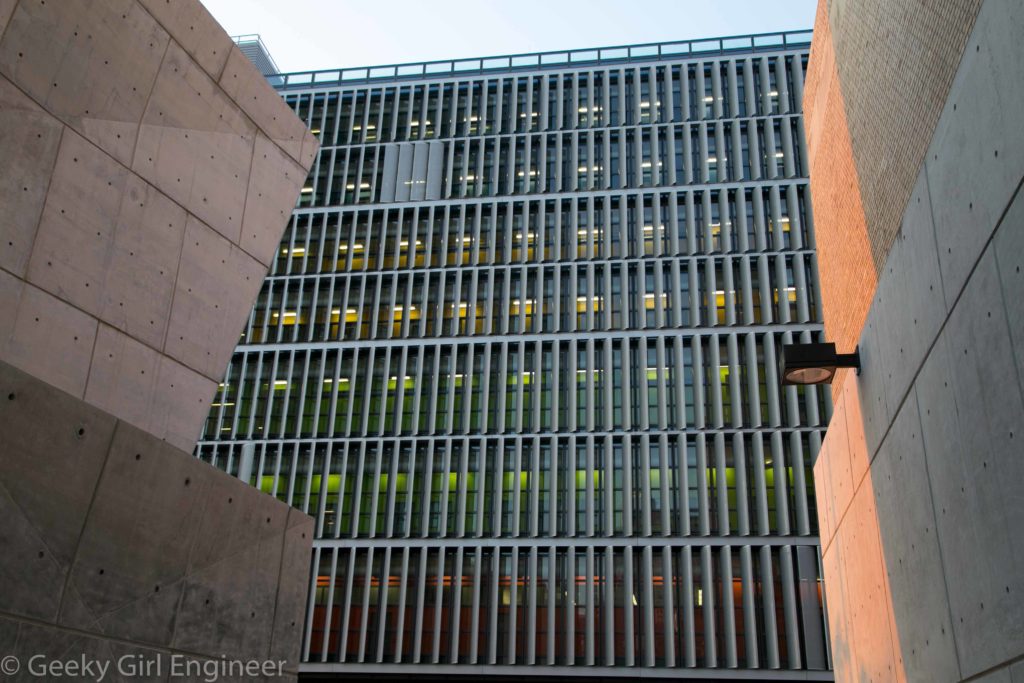
View of garage from salt shed, all floors of garage are different colors to emphasize different garages and functions
Treasure in the Trash
Last week, I finally got the chance to tour Treasure in the Trash, a collection I had heard about a few years back and was obsessed with touring ever since. Treasure in the Trash is a collection of items that former Department of Sanitation of New York worker Nelson Molina found in the trash as he worked his route picking up trash. Only a very small percentage of items in the collection were found by someone else. Also, Mr. Molina worked in the same garage, the M11, during his career, so almost all the items are from the same area in east Manhattan. The collection is housed on the second floor of the M11 garage, which for structural reasons can no longer be used for vehicles (vehicles on only park on the first floor now), so the collection has expanded in the void.
Once trash is put on the curb, it is property of the city. Mr. Molina picked items out of the trash, but as the items were kept in the garage, he never kept them, so he never violated any rules. He would have had to have stopped his habit of picking items out of the trash if it had ever slowed him down on his route. However he clearly is fast in his work, and he is also seriously skilled at knowing which bags might contain items of interest for the collection. He was present during our tour, and he told us that his picking habit started when he was a child, and it clearly is a skill. While it would be easy to find the larger items to pick, we were all amazed at how he found some of the small items that were in bags.
Mr. Molina not only created the collection, but he curates it. The items were all arranged in collections of sorts. He retired from DSNY, but he still comes by the garage often to curate the collection. The collections are well done and arranged. I also enjoyed how he prominently displayed a poster for Open House New York, which arranged the tour, and a poster from the City of New York telling people to “Recycle More, Waste Less!”
The collection is amazing in its diversity, but it is really a statement about what we as a society throw away. So many things we buy now are “disposable” with the resources used to make them then just put into the trash when no longer desirable or useful. However with so many items, there are still resources that could be saved from the discarded item, if the item was discarded correctly. However in most places, it is difficult to discard of an item in a way that the resources could be retrieved from them. For example, metal recycling exists, but it is not always easy to get an item to a metal recycler. If you can though, you can actually make money from getting the metal to a recycler, like I did when I was renovating my house. [Side note: I don’t know the precise amount, but a decent amount of New York trash goes to Covanta Waste to Energy incinerators. After the trash is burned, Covanta’s process does capture metals to then send for scrap. However burning metals lowers the efficiency of the incinerator.]
Some of the metal in the collection though, like many other items in the collection, look like something, that someone else would eagerly buy. Some of the jewelry, china, and glass looked if not really valuable, good enough that someone would happily buy at a thrift store or on eBay.
Seriously, much of the collection features items that are the reason eBay was created and continues to thrive.
Then there are other collections that feature items that would be right at home in a museum of some type.
Then there were the items like old televisions, phones, and other electronics, that not only contain valuable resources like rare earth metals but also contain material, including those same rare earth metals, that are hazardous if they get into the environment. With most modern technology hardware, retrieving those valuable resources is difficult because of the way the items are constructed. Further, often the items are sent to developing nations, where people retrieve the valuable material to sell, but they work in ways that is dangerous to their own health.
Other items are funny, random, and weird. Some items made me wonder why someone had the item to begin with. Other items made me sad, like a cross stitch that featured what was clearly a bride and groom and said “Yvette and Lance – March 16, 2007.” I am just guessing Yvette and Lance’s marriage did not make it.
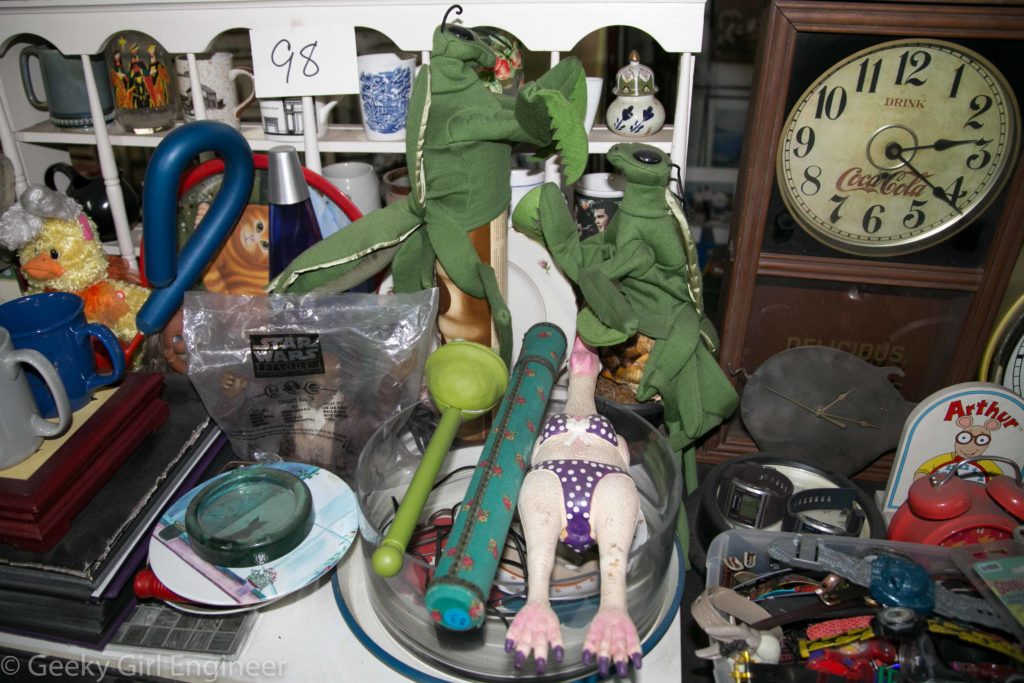
This was one of my favorite collection with the fighting praying mantises and wooden “rubber” chicken. On the left is a ThighMaster.
Then there was this gem that welcomes you as you walk up the stairs to Treasure in the Trash.
The place was amazing. If you ever get the chance, go tour it. Also, many thanks to Open House New York for arranging the tour, DSNY for letting us in, Nelson Molina for talking about the collection, and Robin Nagle, DSNY’s anthropologist in residence, for her introduction to the collection and whose book “Picking Up” about DSNY is well worth the read.
Freshkills Landfill Turned Park
This past weekend, I got to check an item off my bucket list when I got a tour of Freshkills, the former landfill that is being turned into a park. This is probably not an item on most people’s bucket list, but I have heard so much about the landfill that when I found out New York City Parks Department gives tours, I jumped to sign up. The vast majority of the landfill has been fully capped and vegetated. The mounds are dotted by the landfill gas collection system with gas wells popping up from the high grass at regular intervals. The wildlife has already moved in. There were butterflies flying everywhere in the grass, and birds were everywhere. We also saw a family of deer. The wetlands are lovely and evidently filled with wildlife. Also, the view from the top of the mounds is spectacular. It will be a while before the area will be completely converted to a park and open to the public, but the transformation already is incredible. As an environmental engineer, I am incredibly happy to see it and proud of my profession that did it.
Coney Island Creek
I went on a hike along Coney Island Creek with Atlas Obscura and Underwater New York to see its virtual ship graveyard. The tour did not disappoint. There were a multitude of shipwrecks, including the famous yellow submarine. We walked along the shore during high tide. The shore was quite mucky, and I was thankful for my waterproof hiking boots, while trying not to think about what was in that muck. There was lots of algae and seaweed of some type. We spotted a few fishermen and men who appeared to be hunting for oysters or clams or sometime of shellfish (are they called fishermen also?). I have serious doubts the fish are safe to eat on a regular basis, simply based on the history of pollution in that area. I can only hope I am wrong for their sake.

